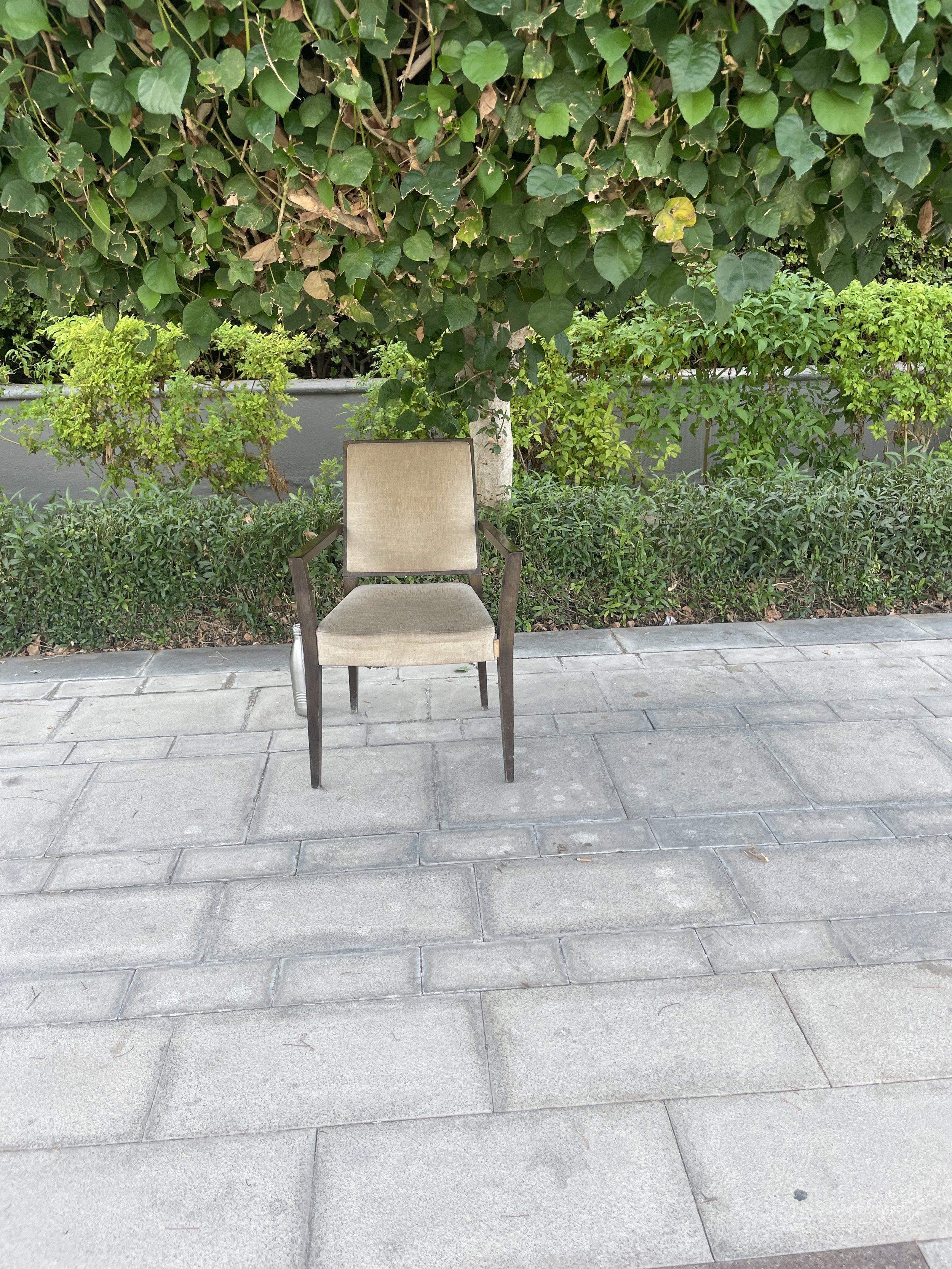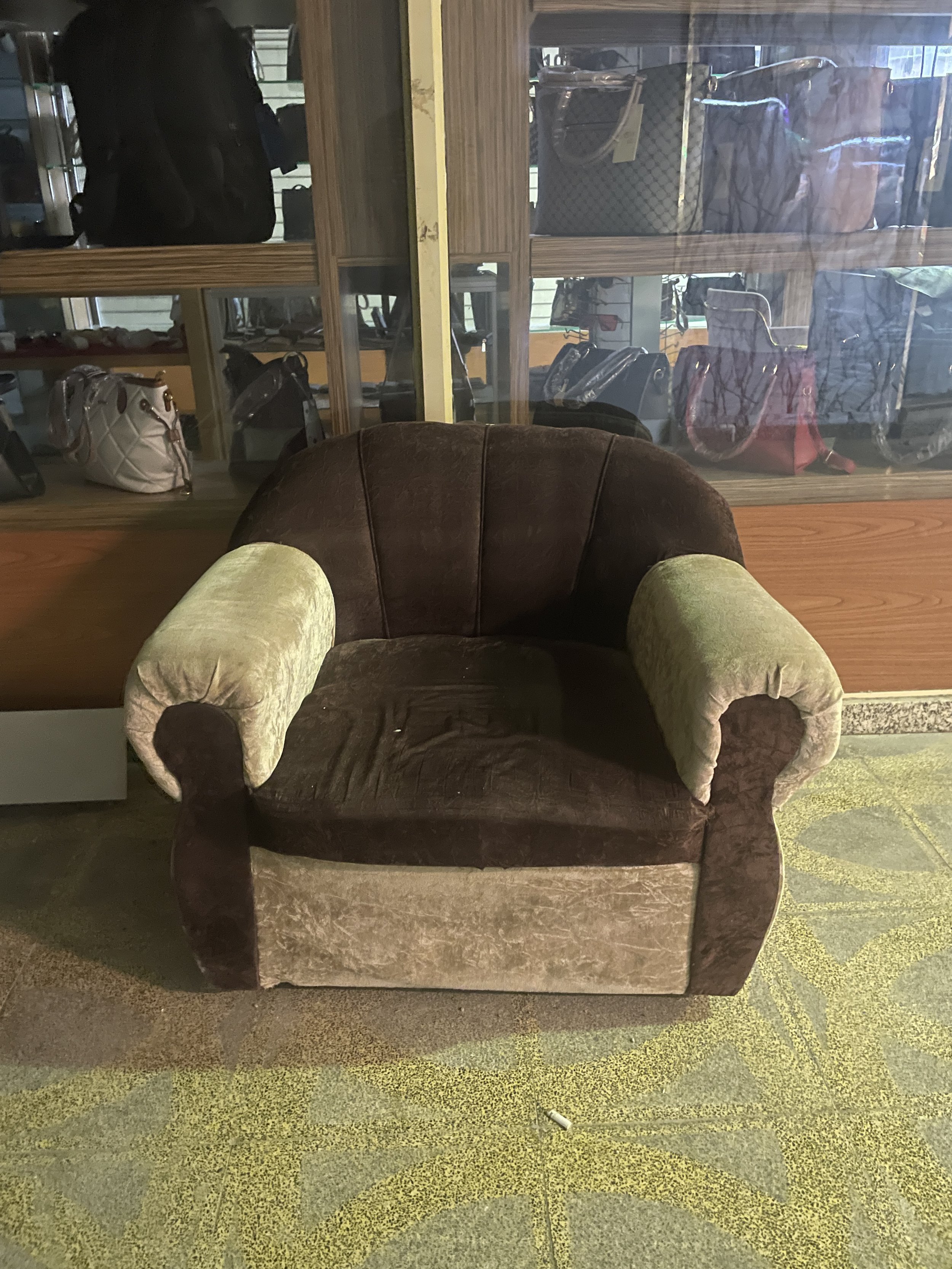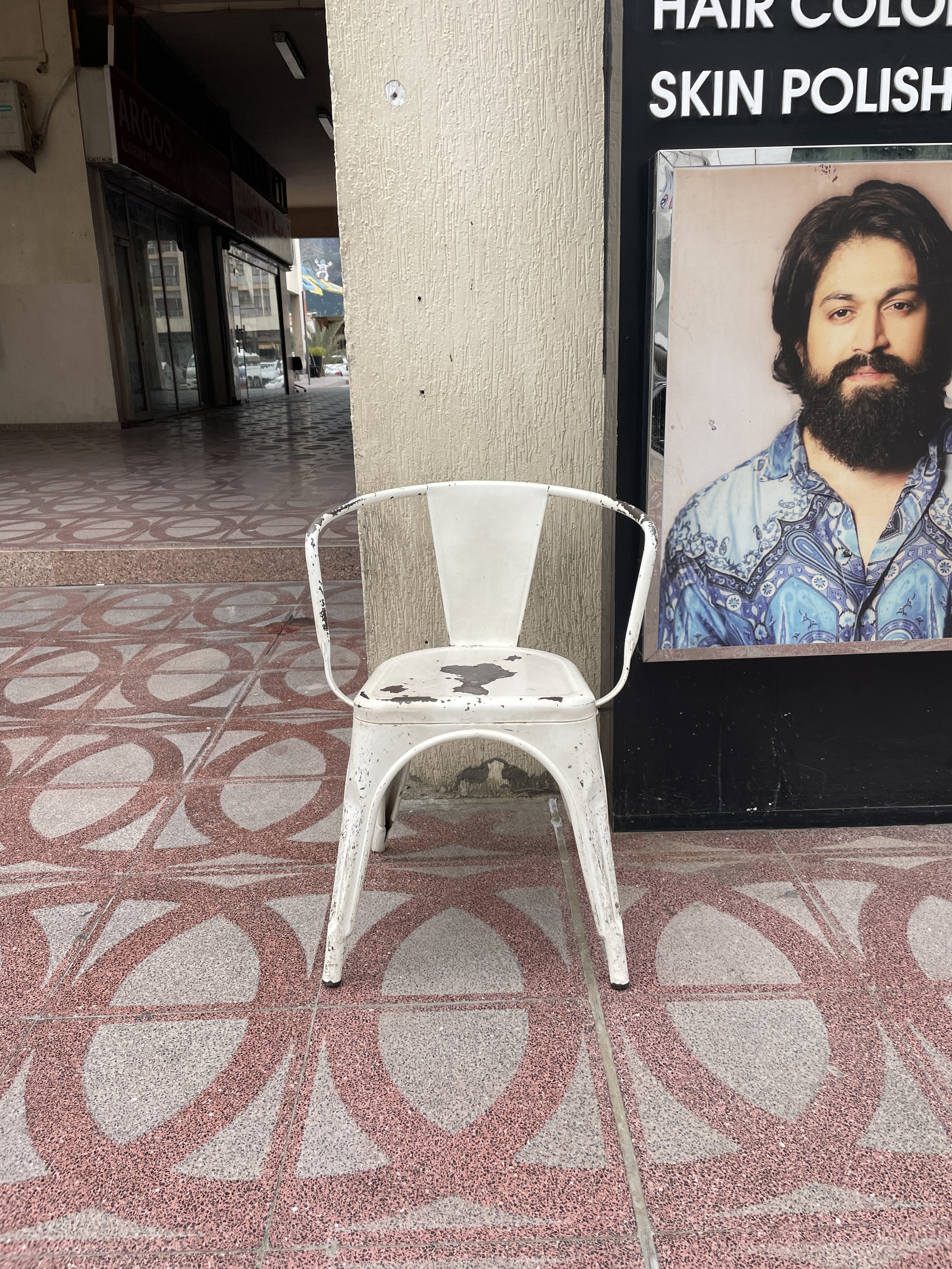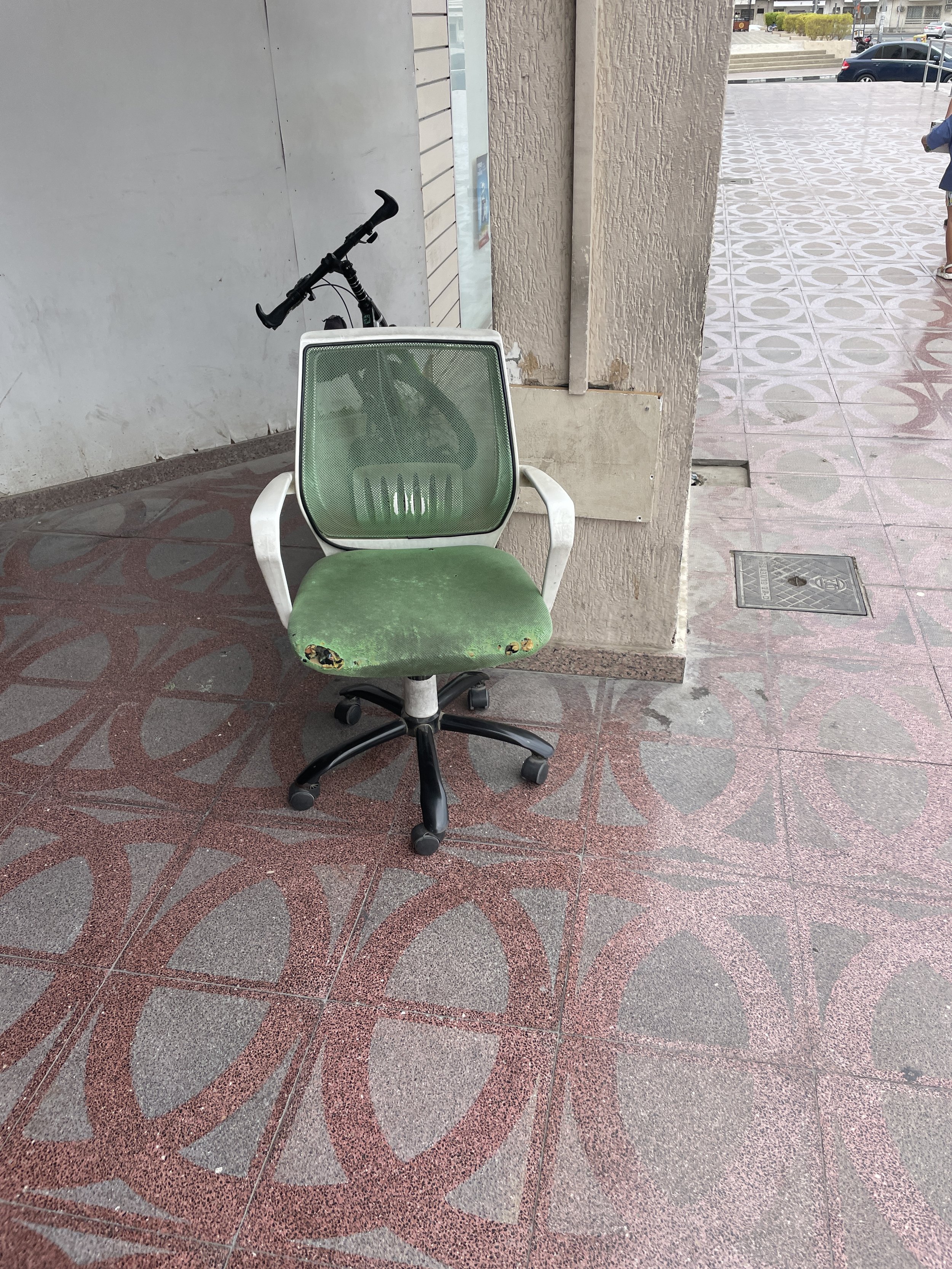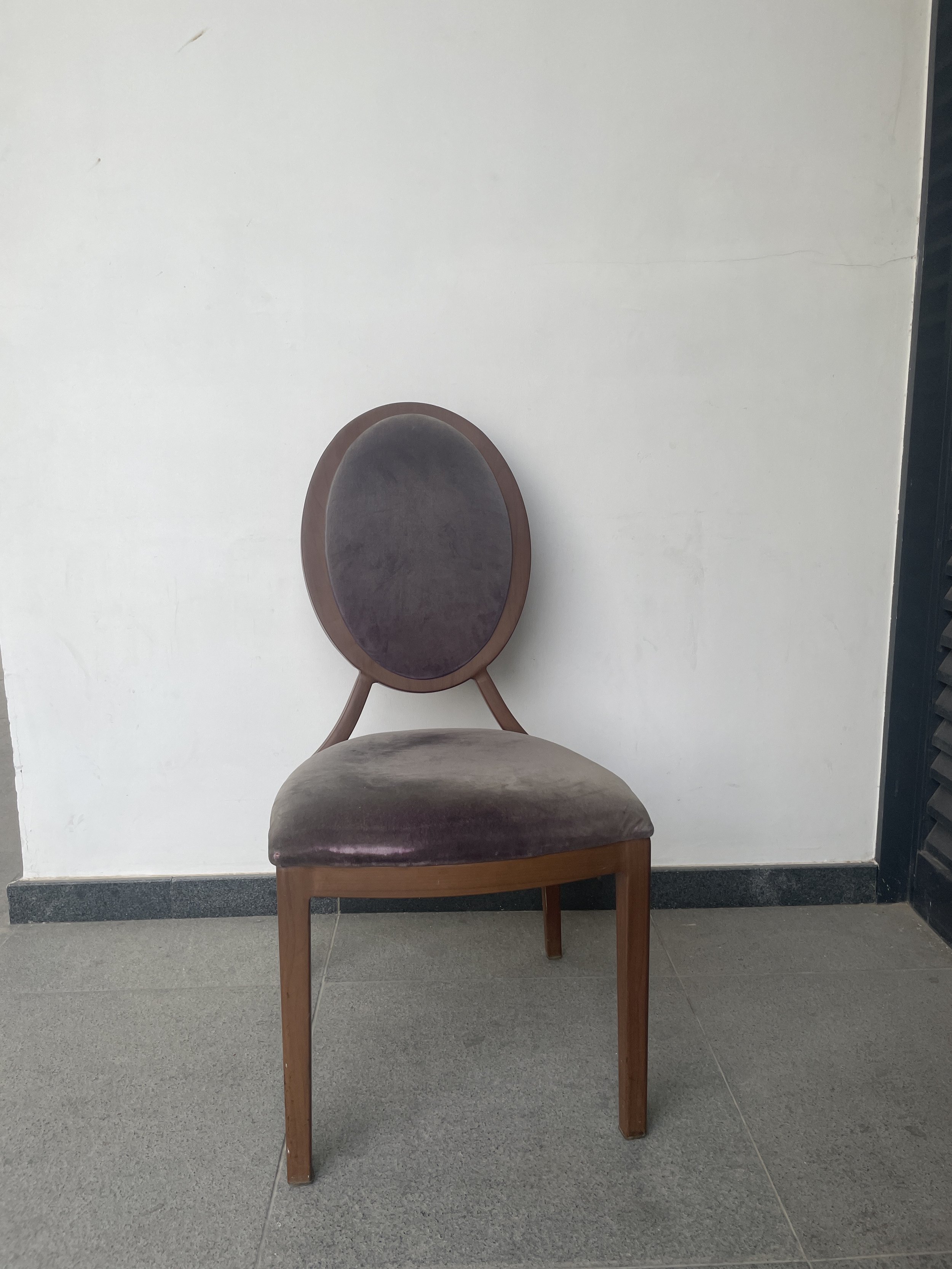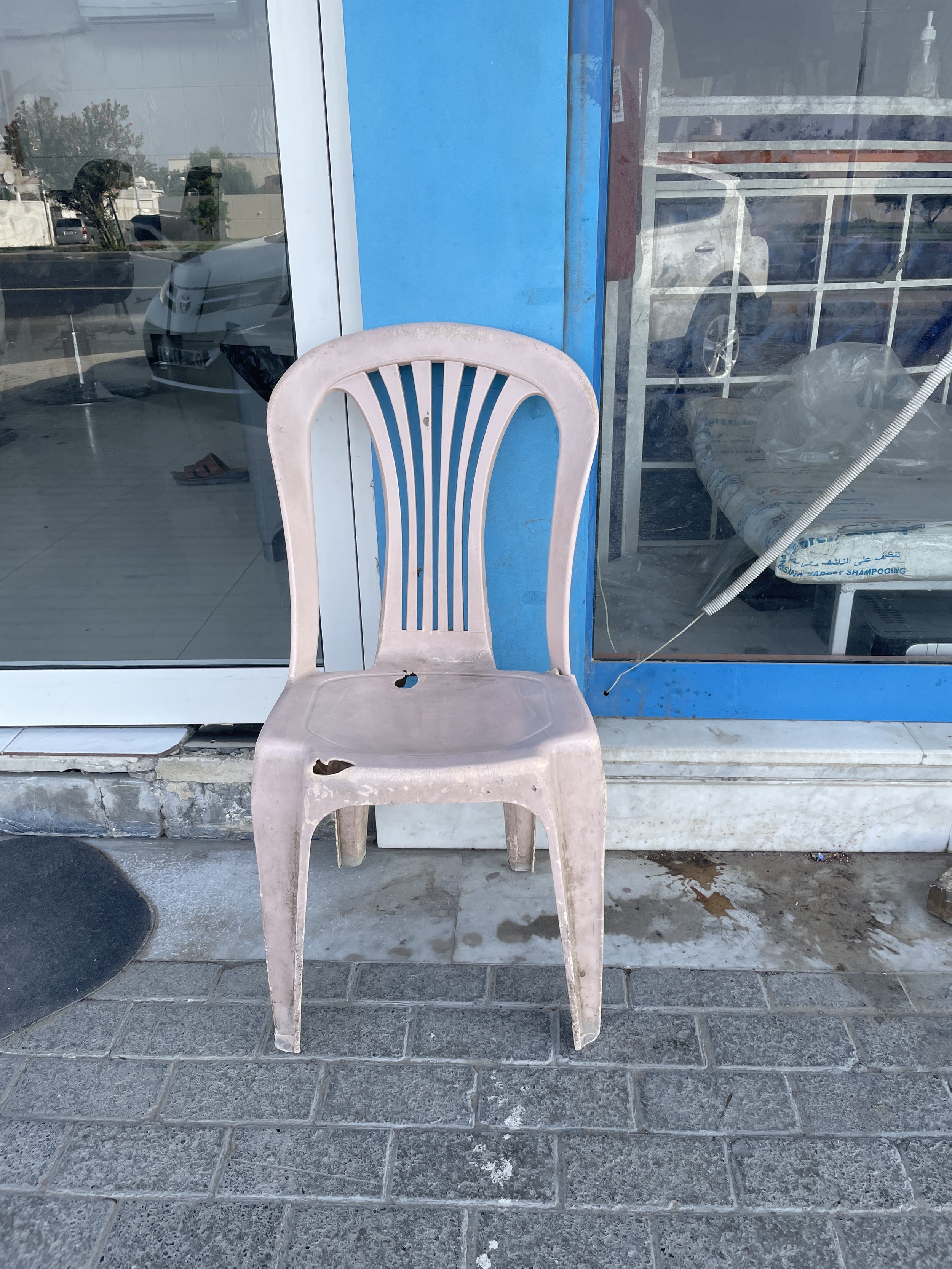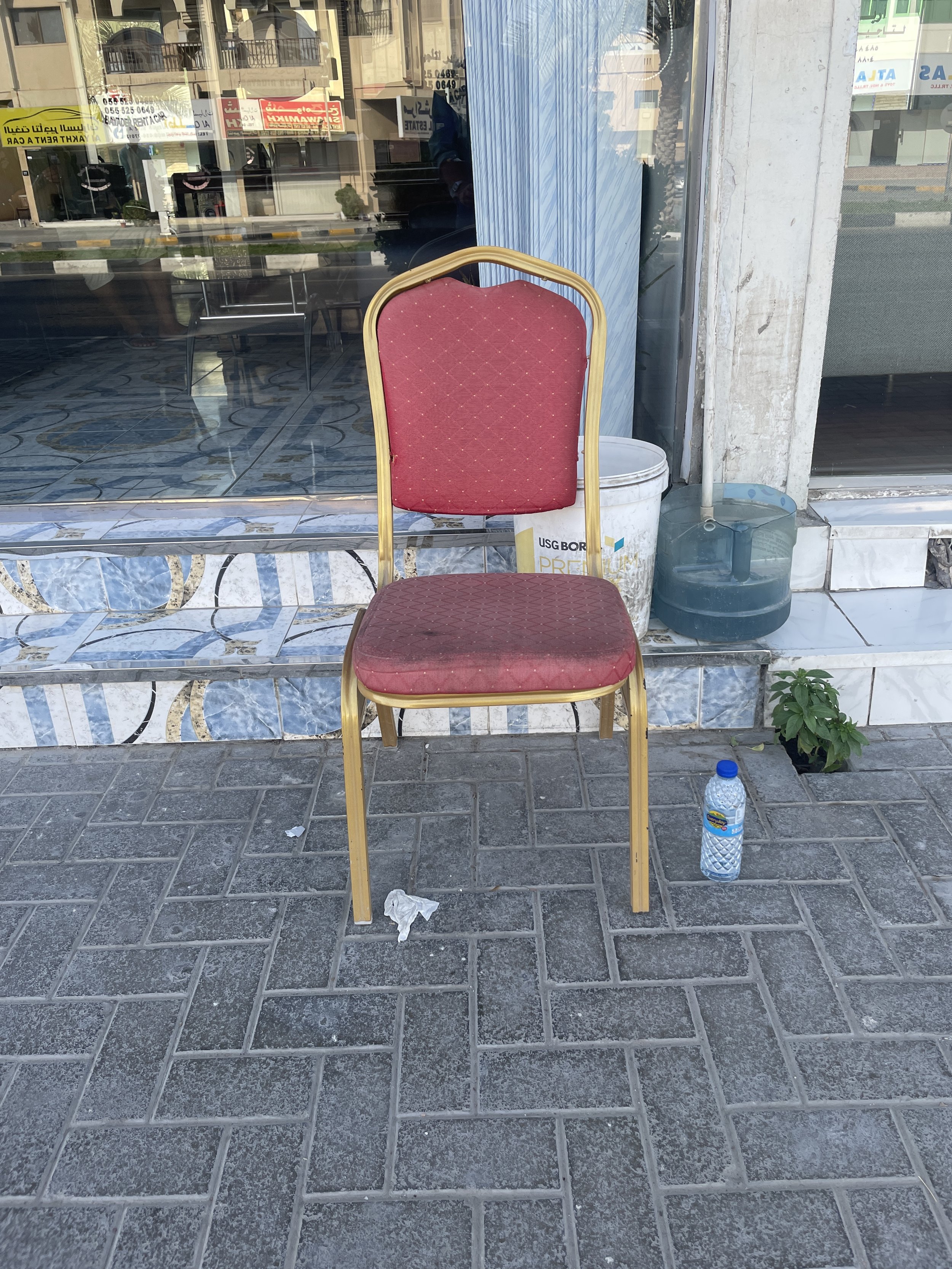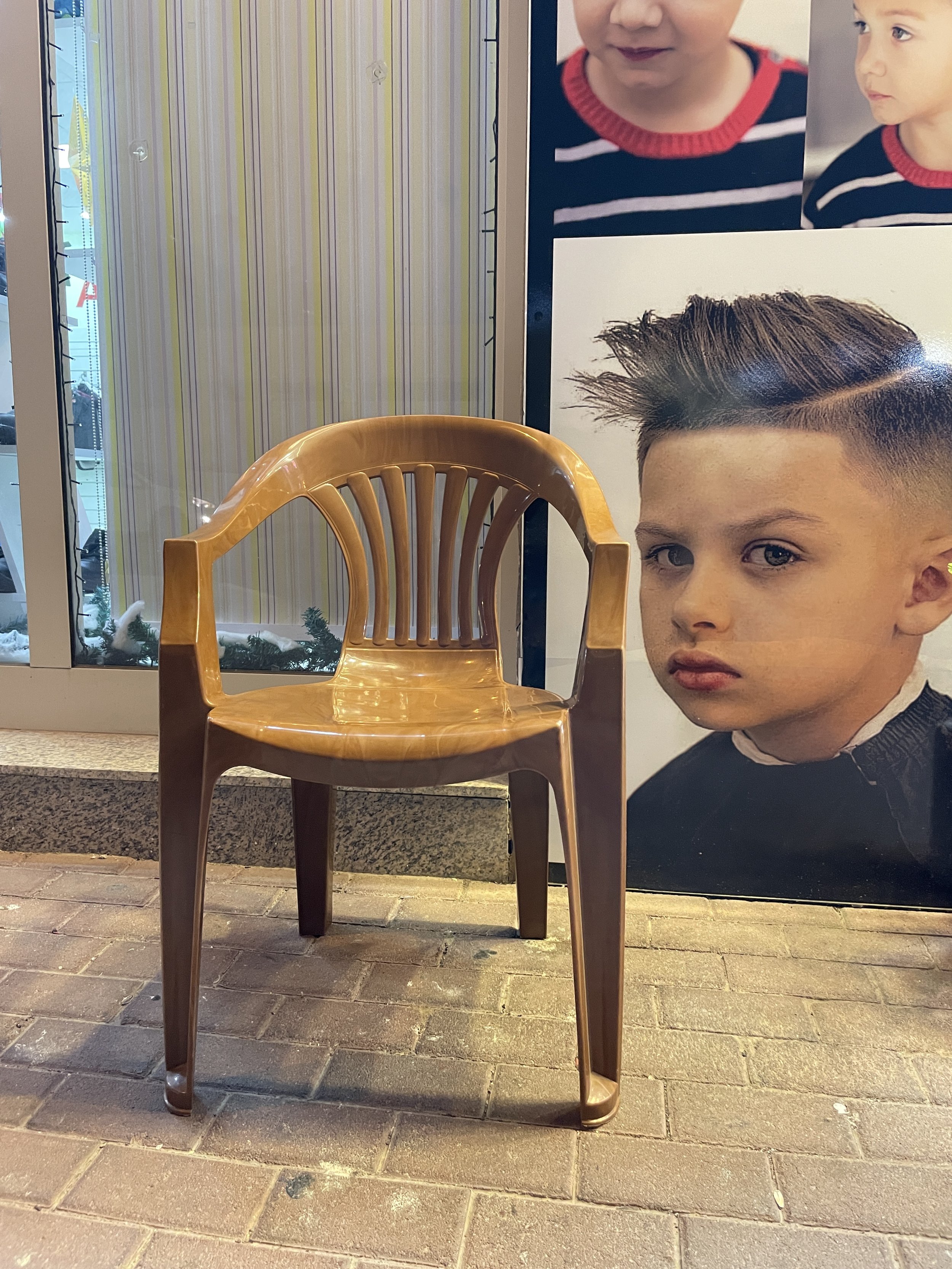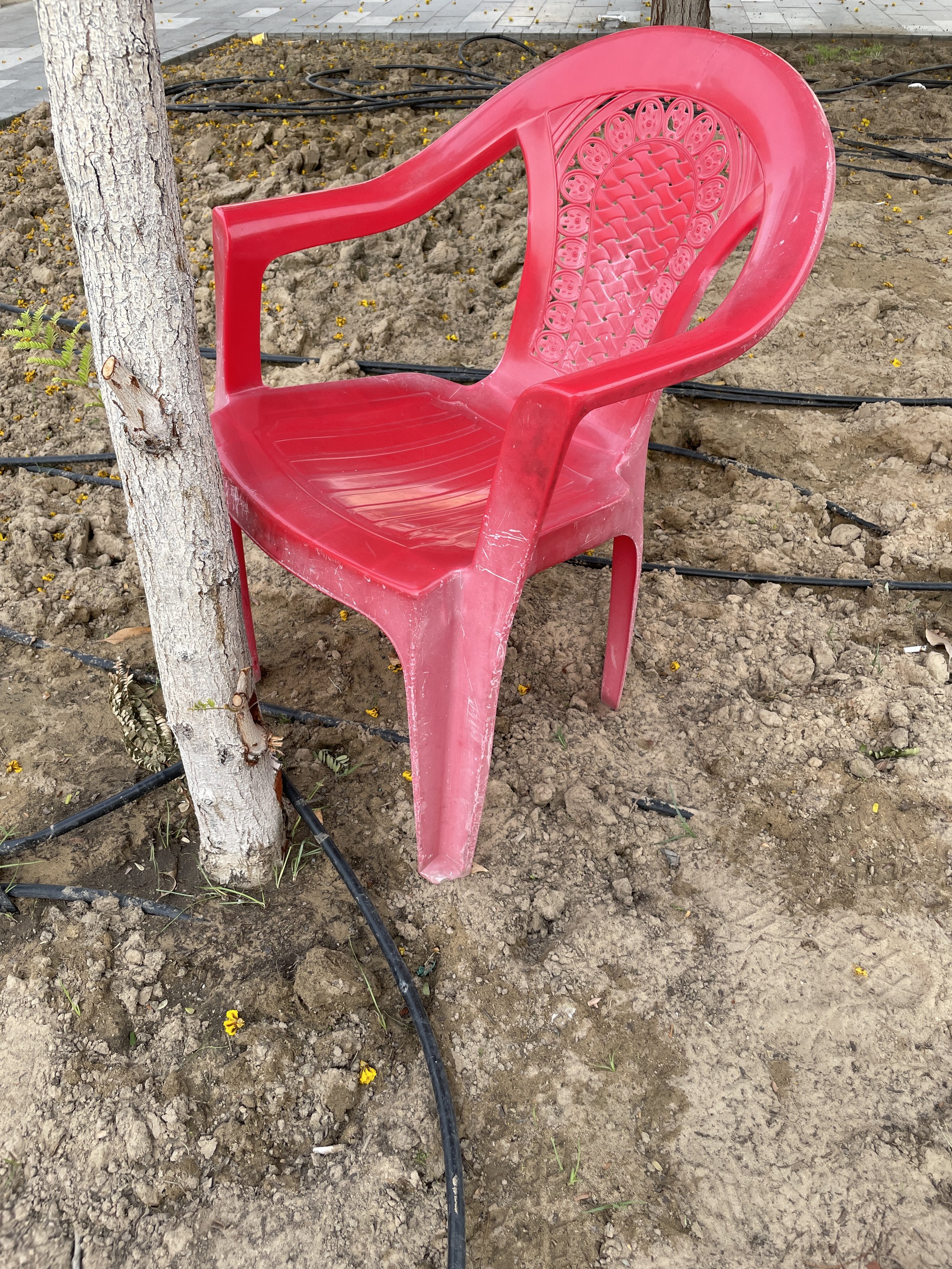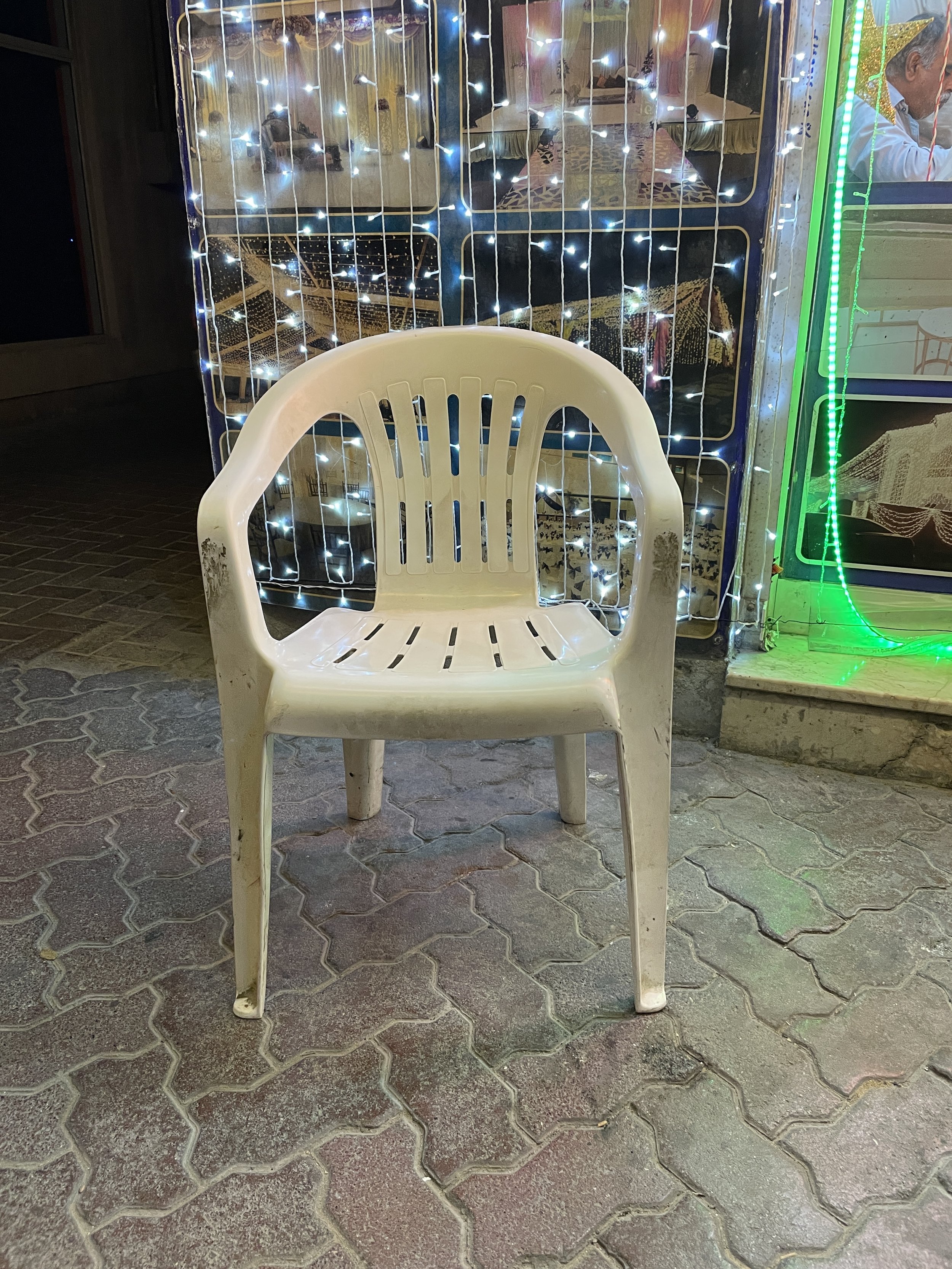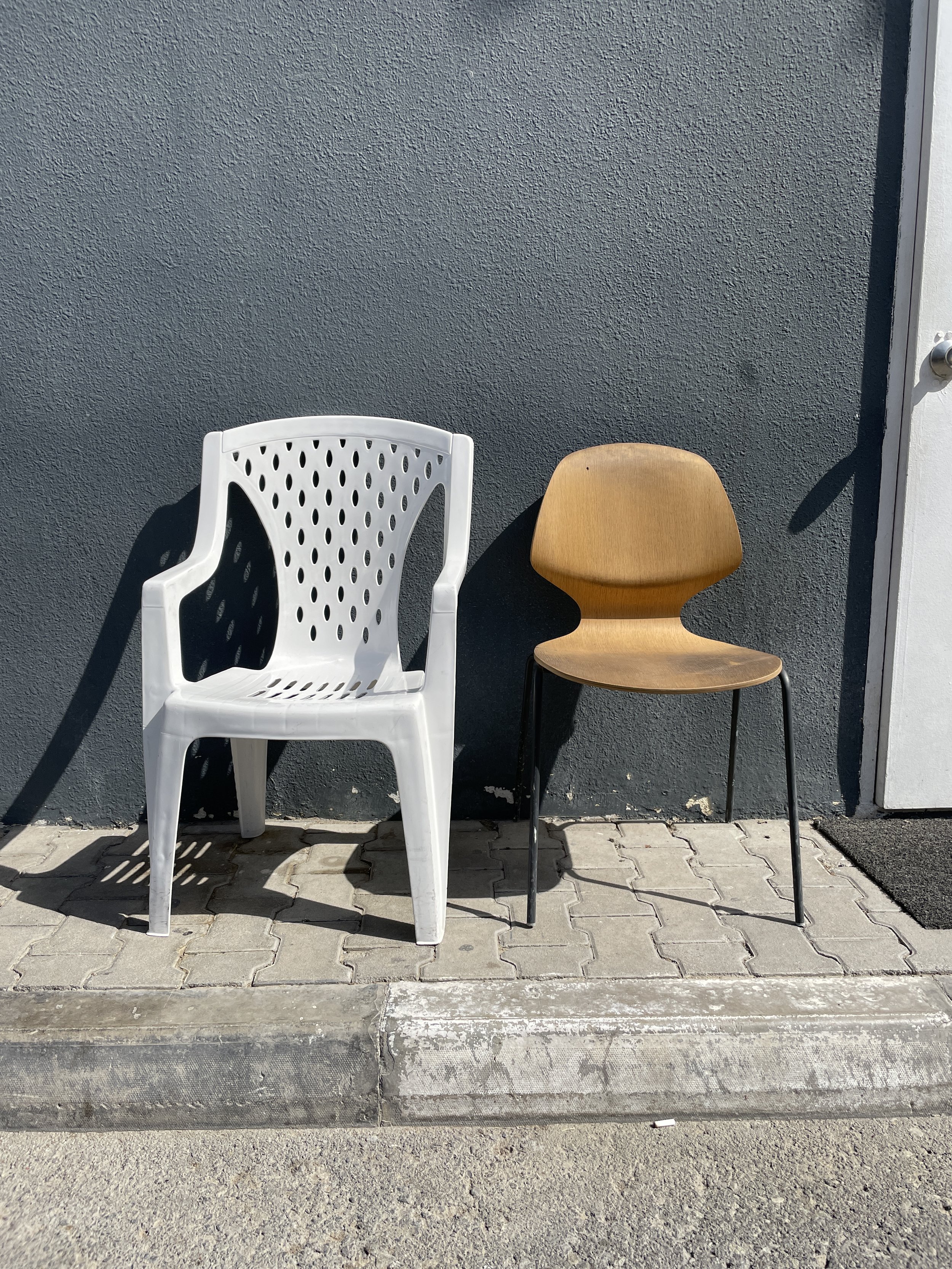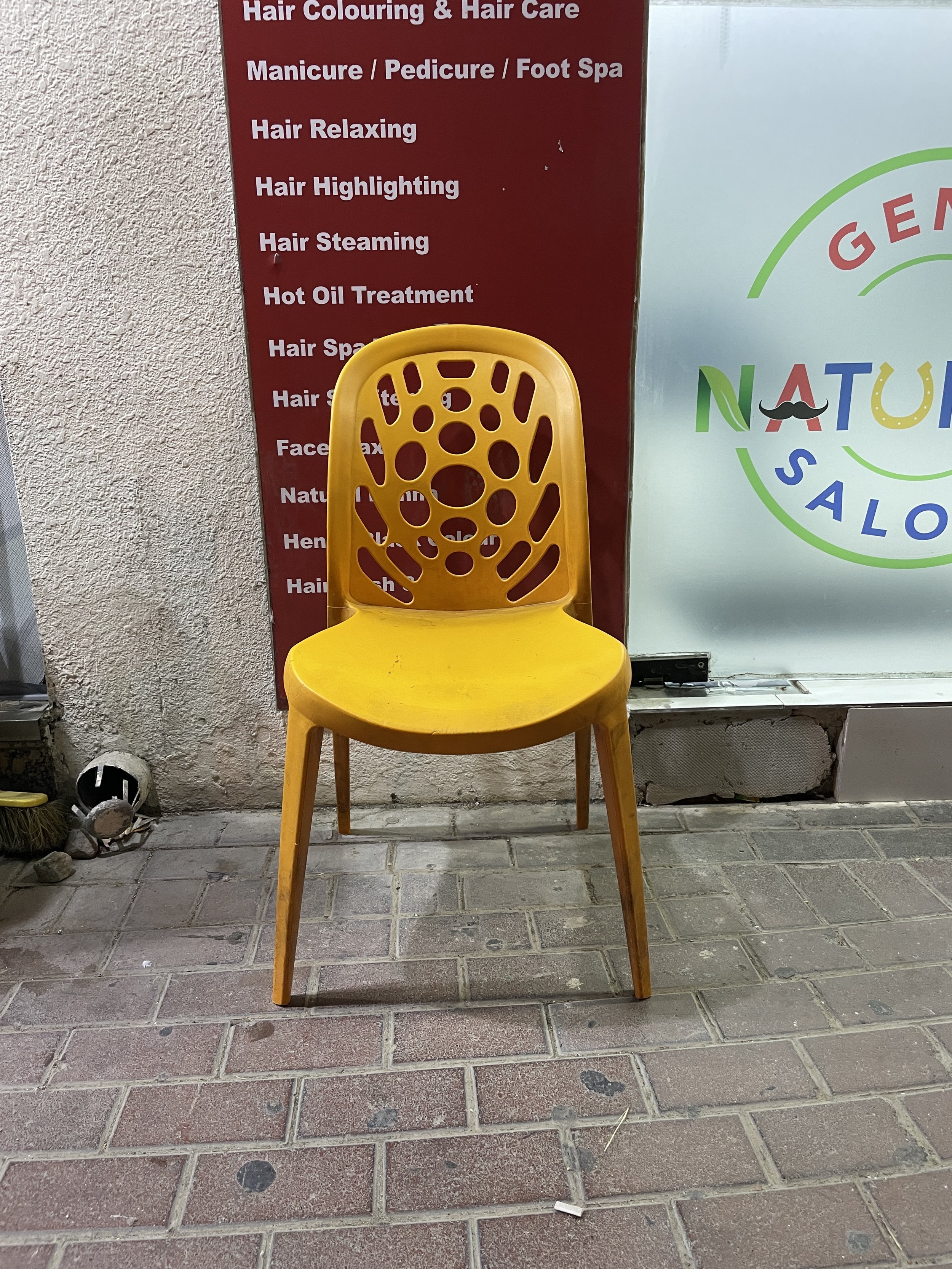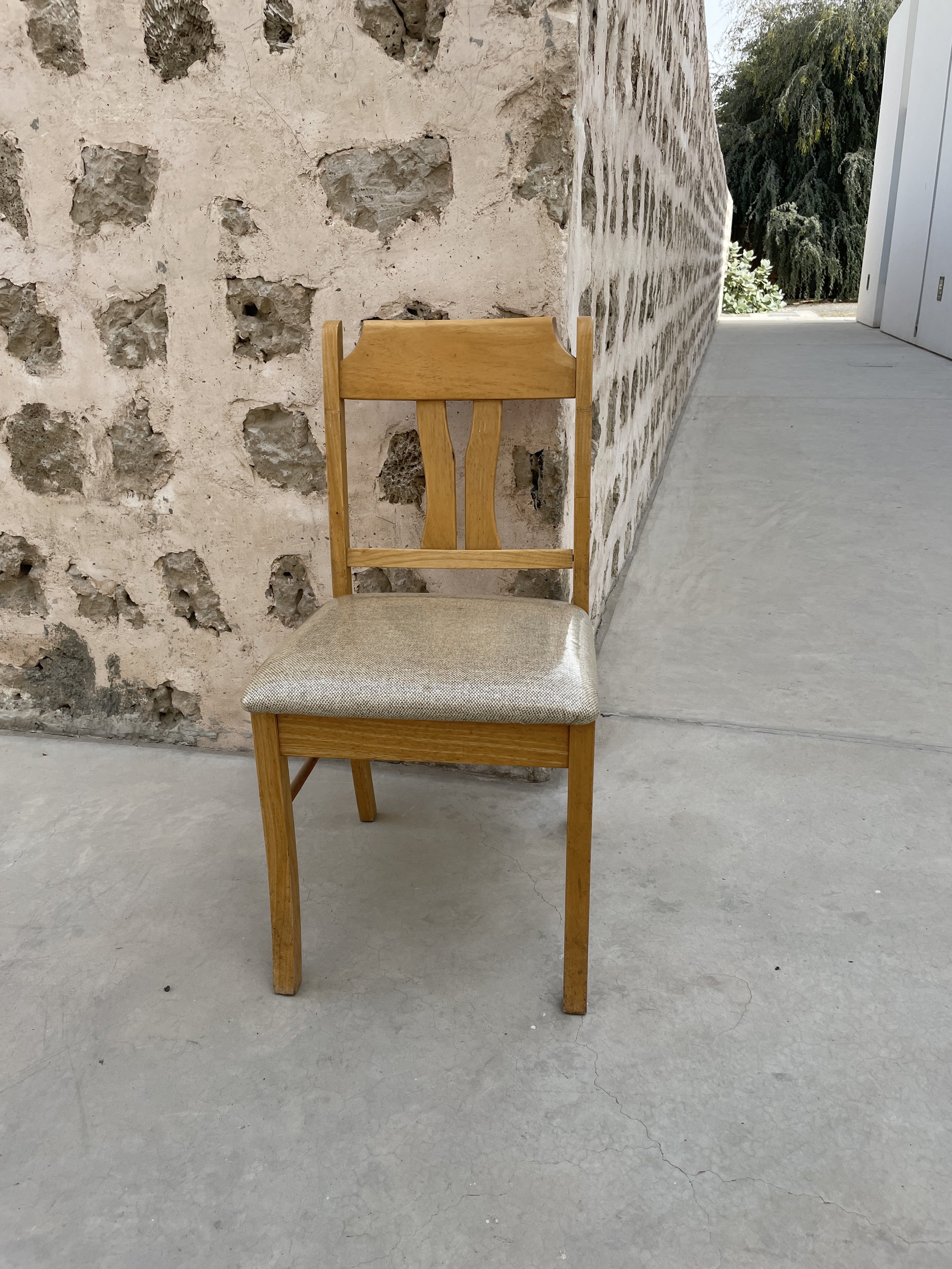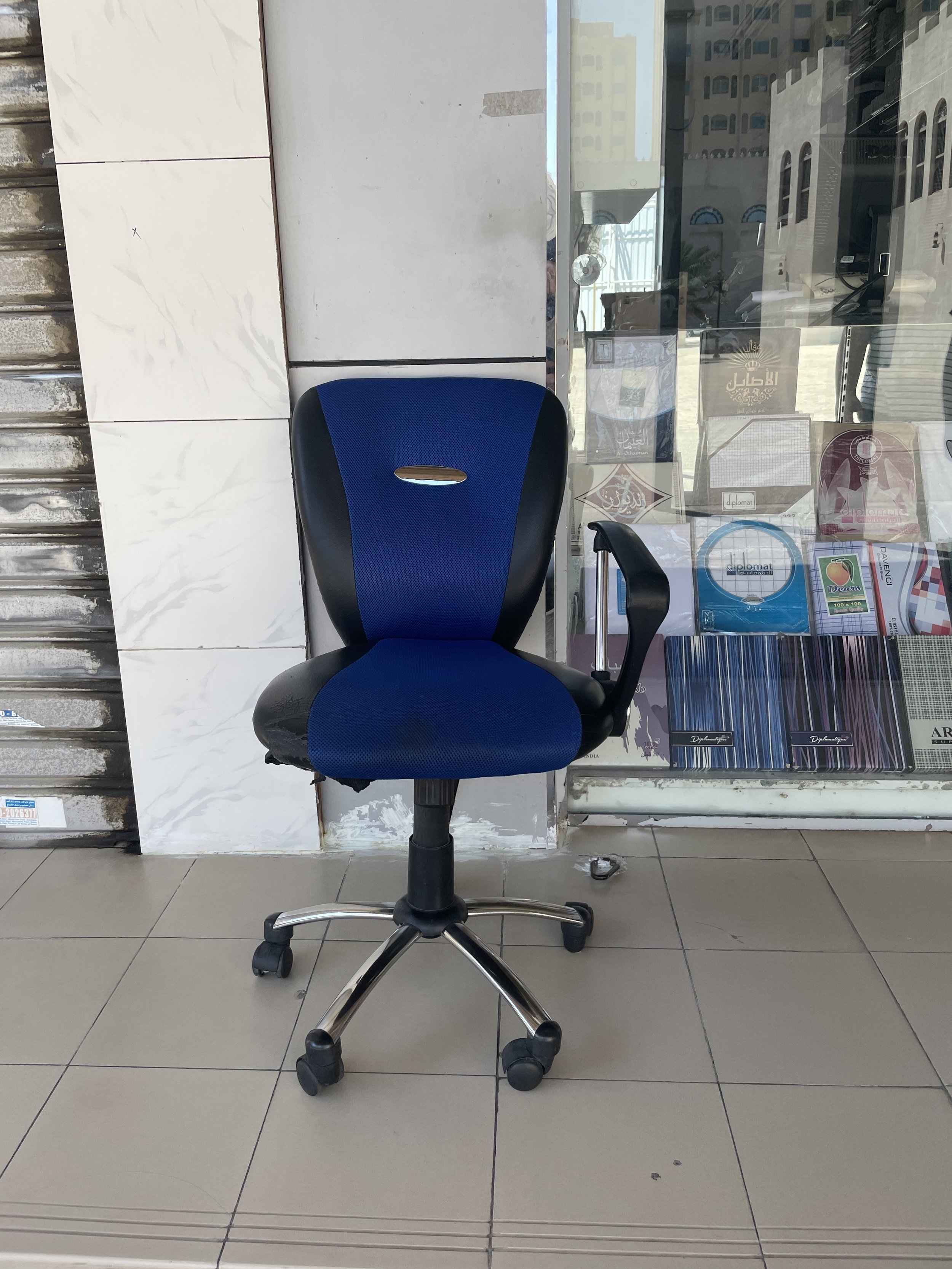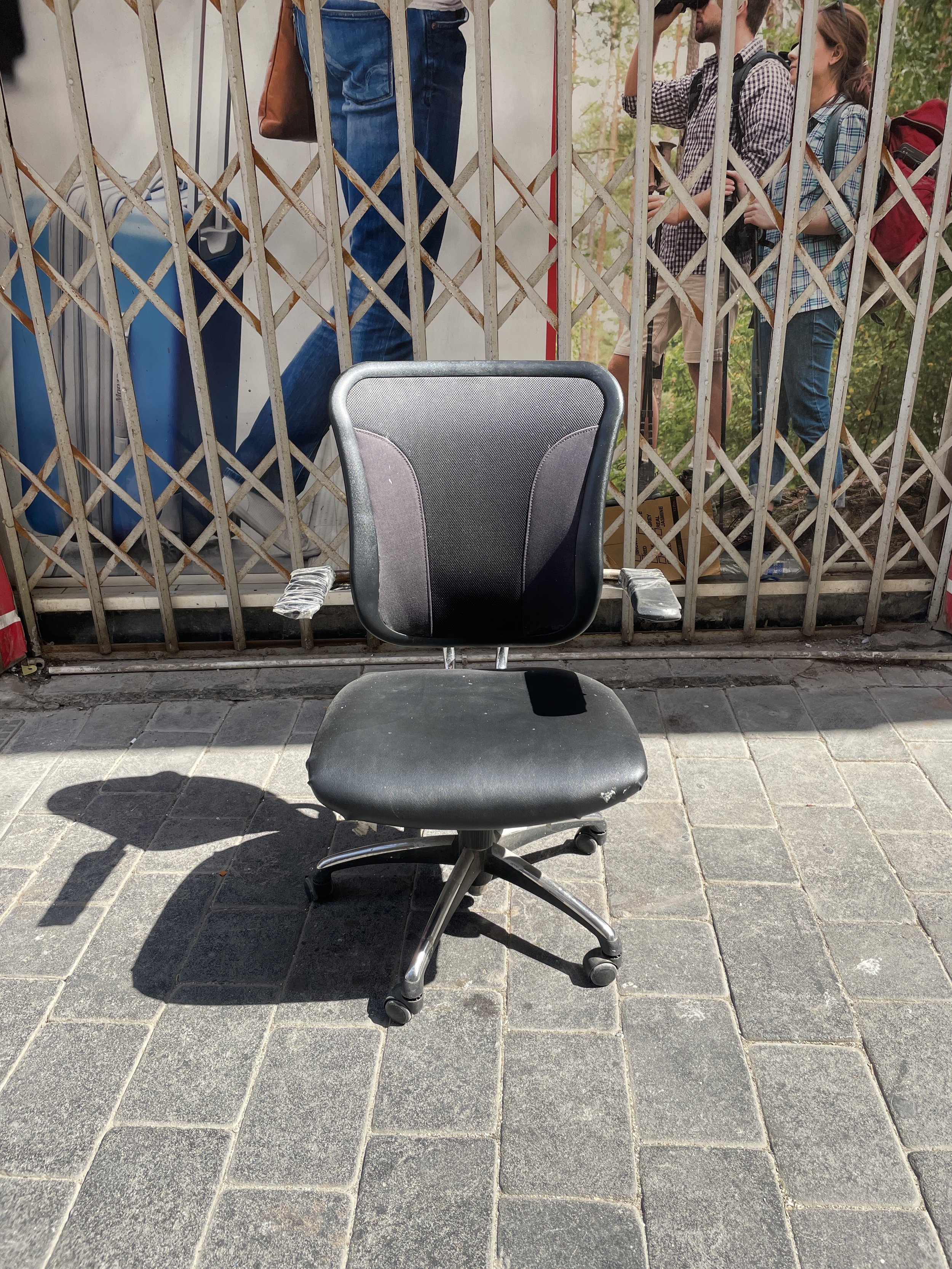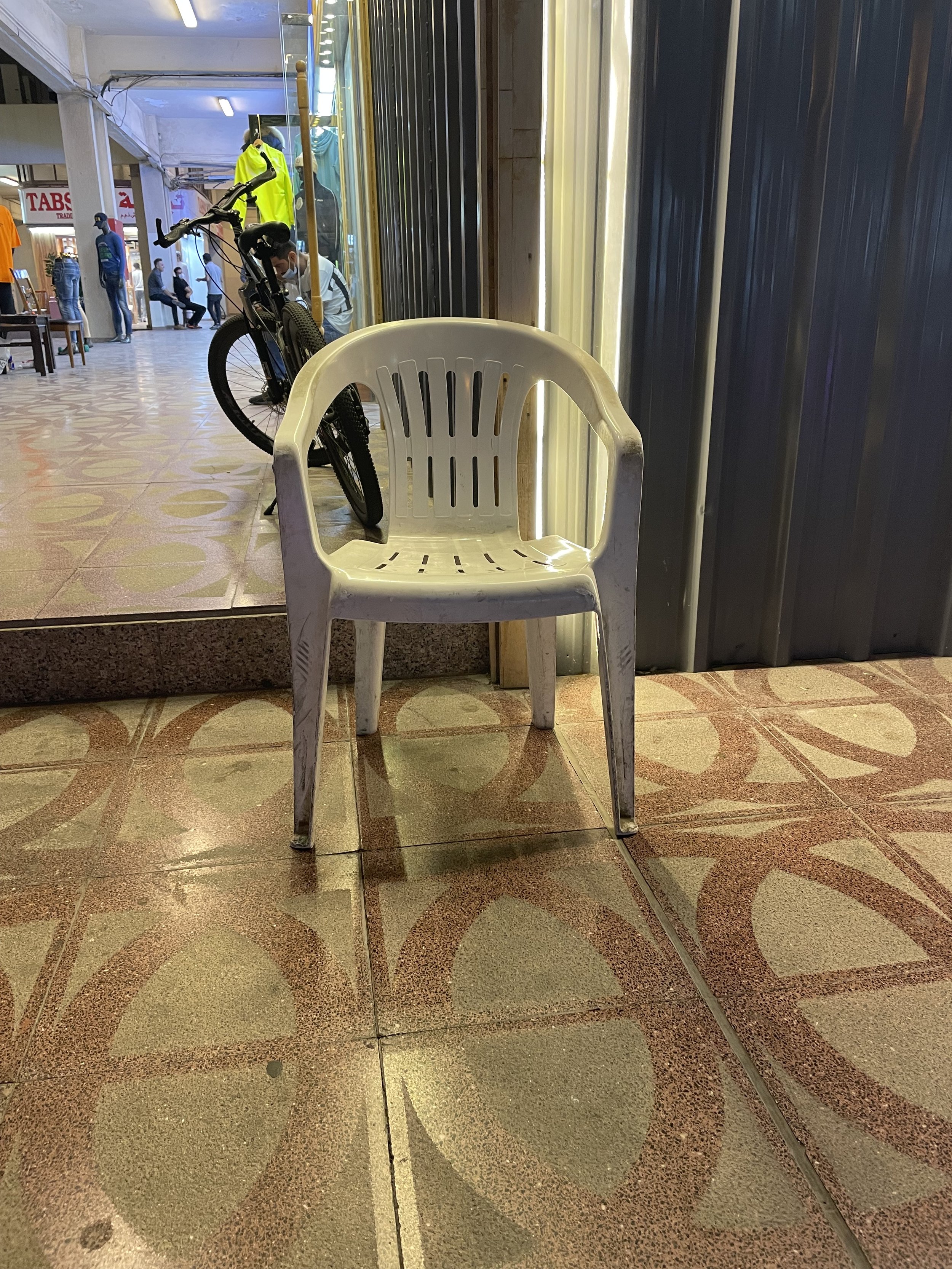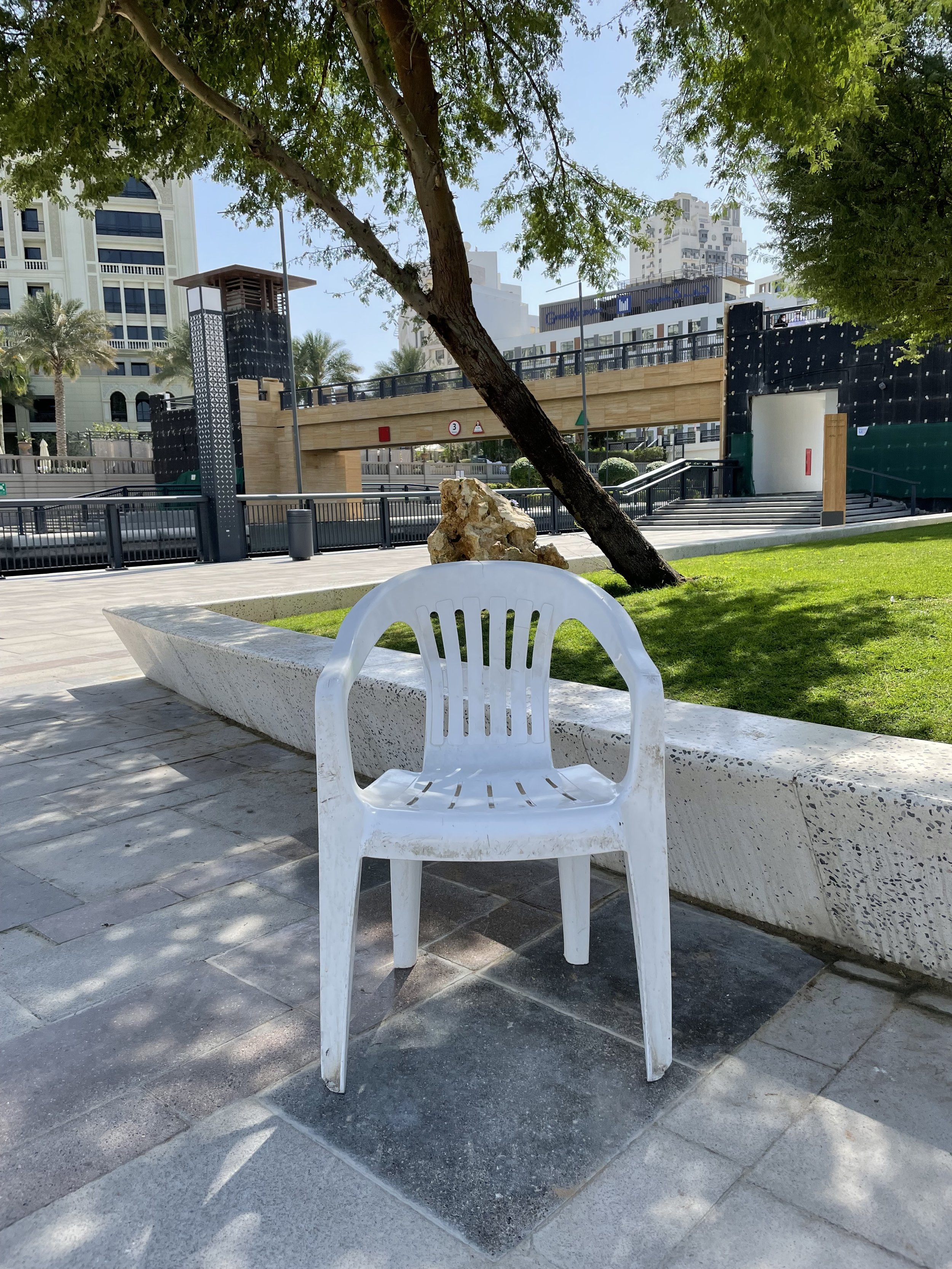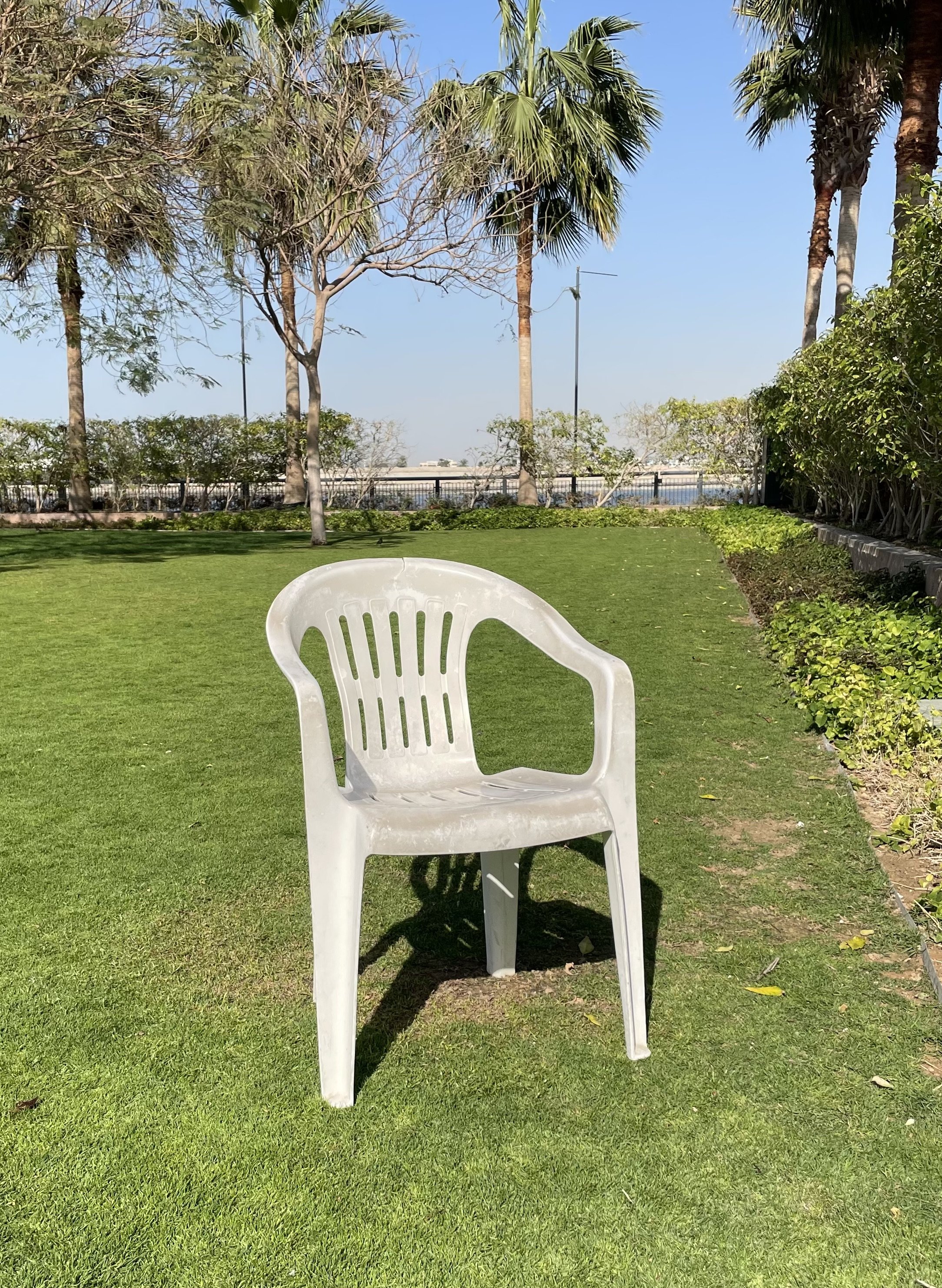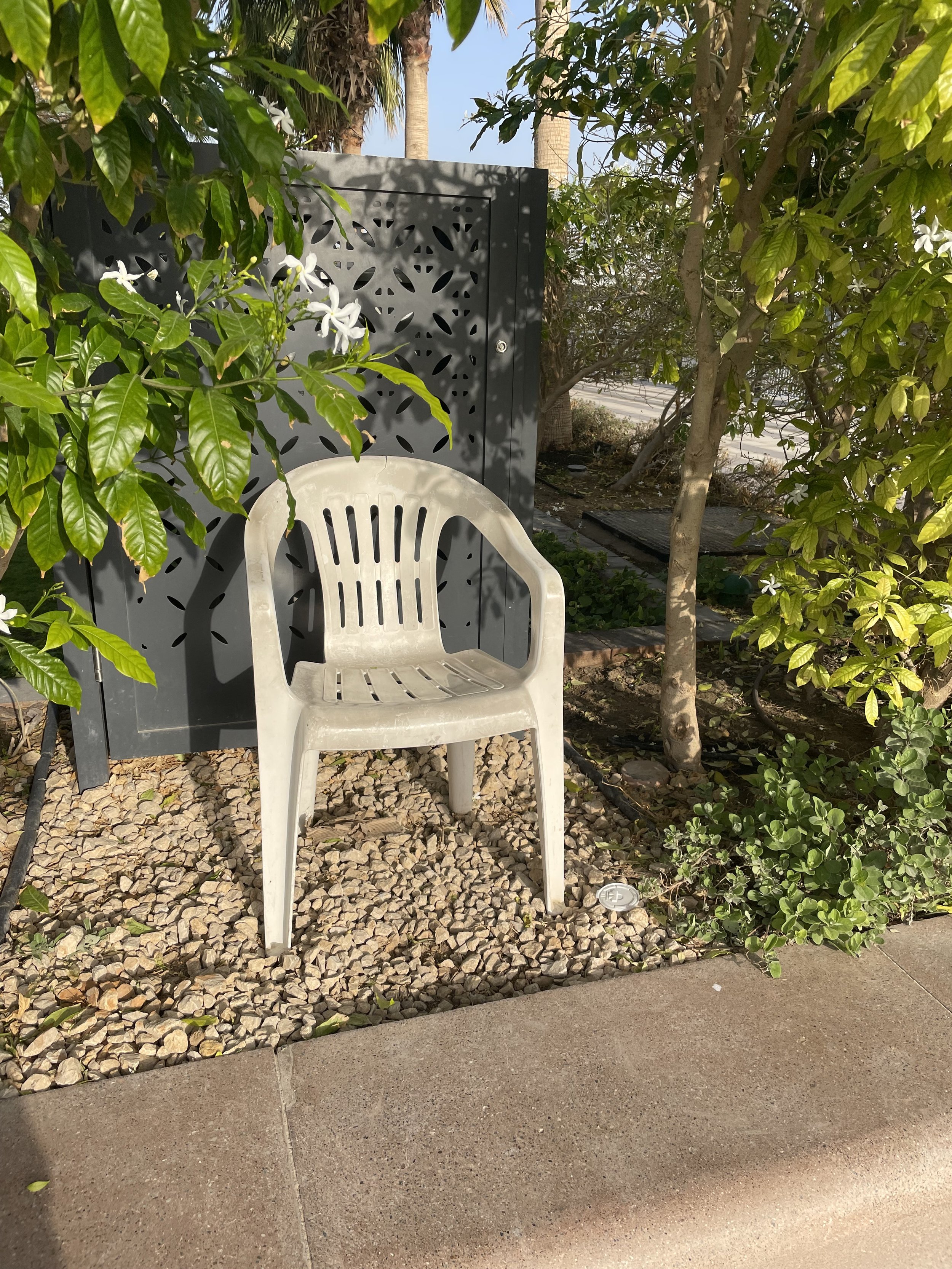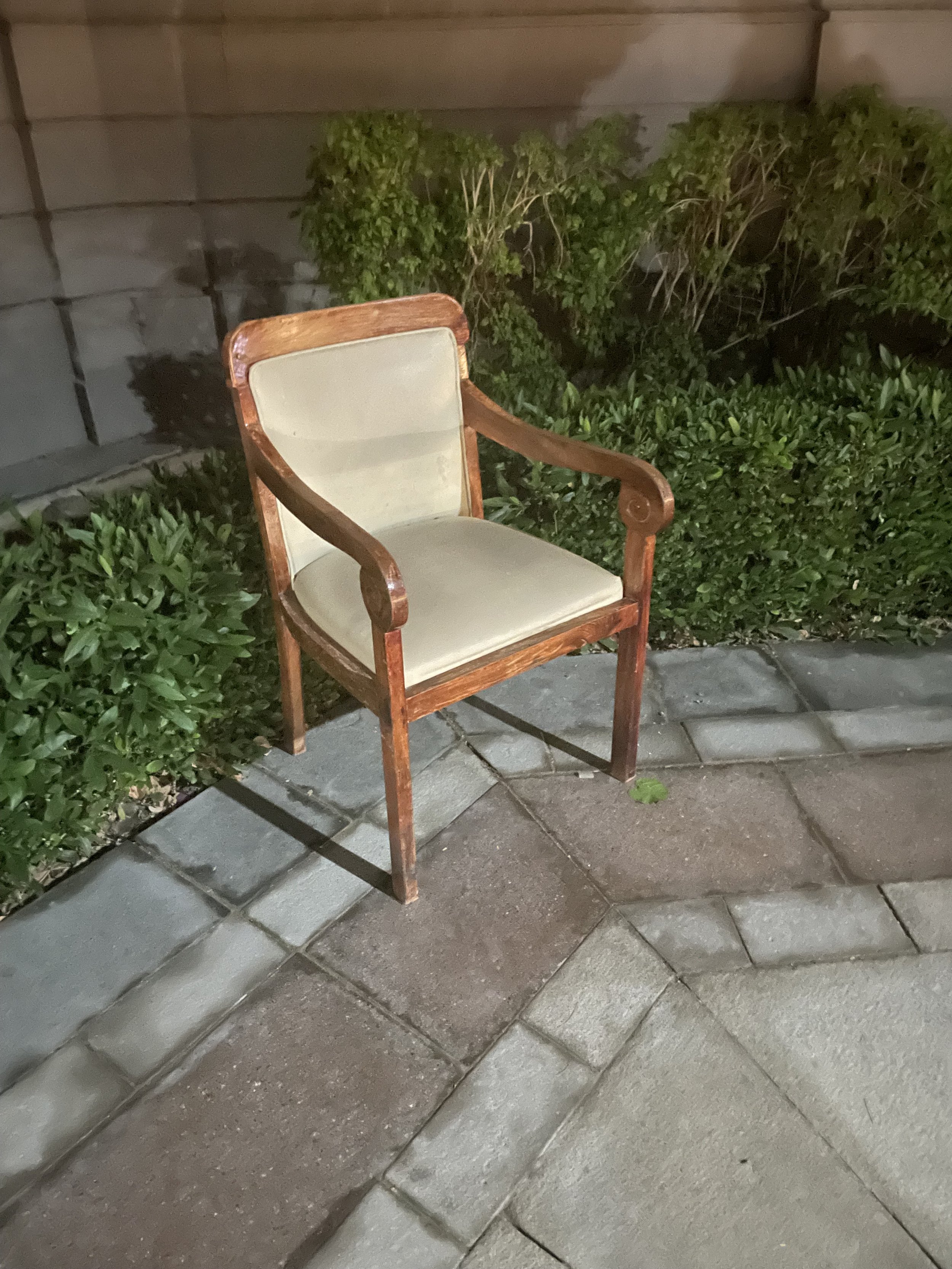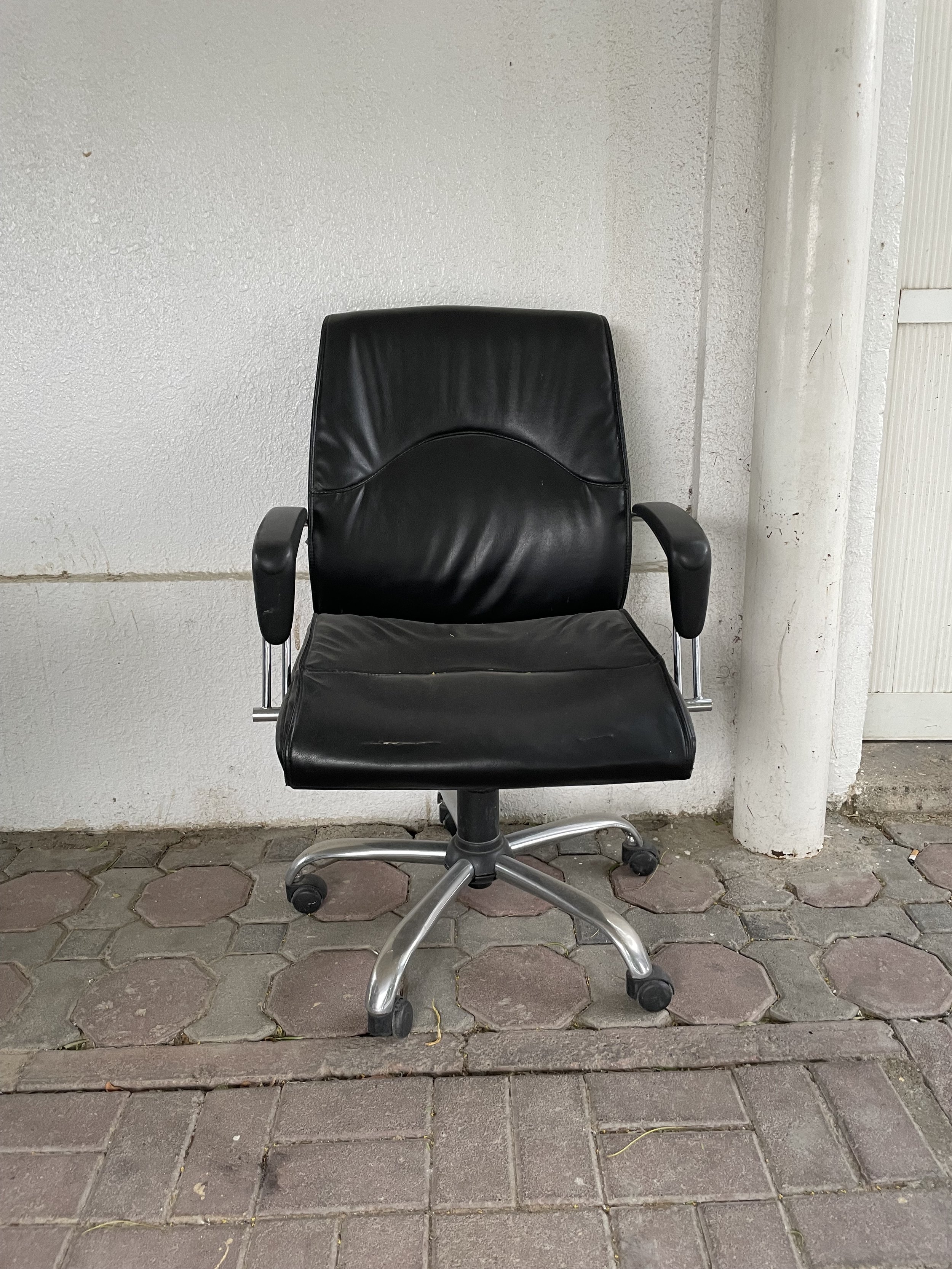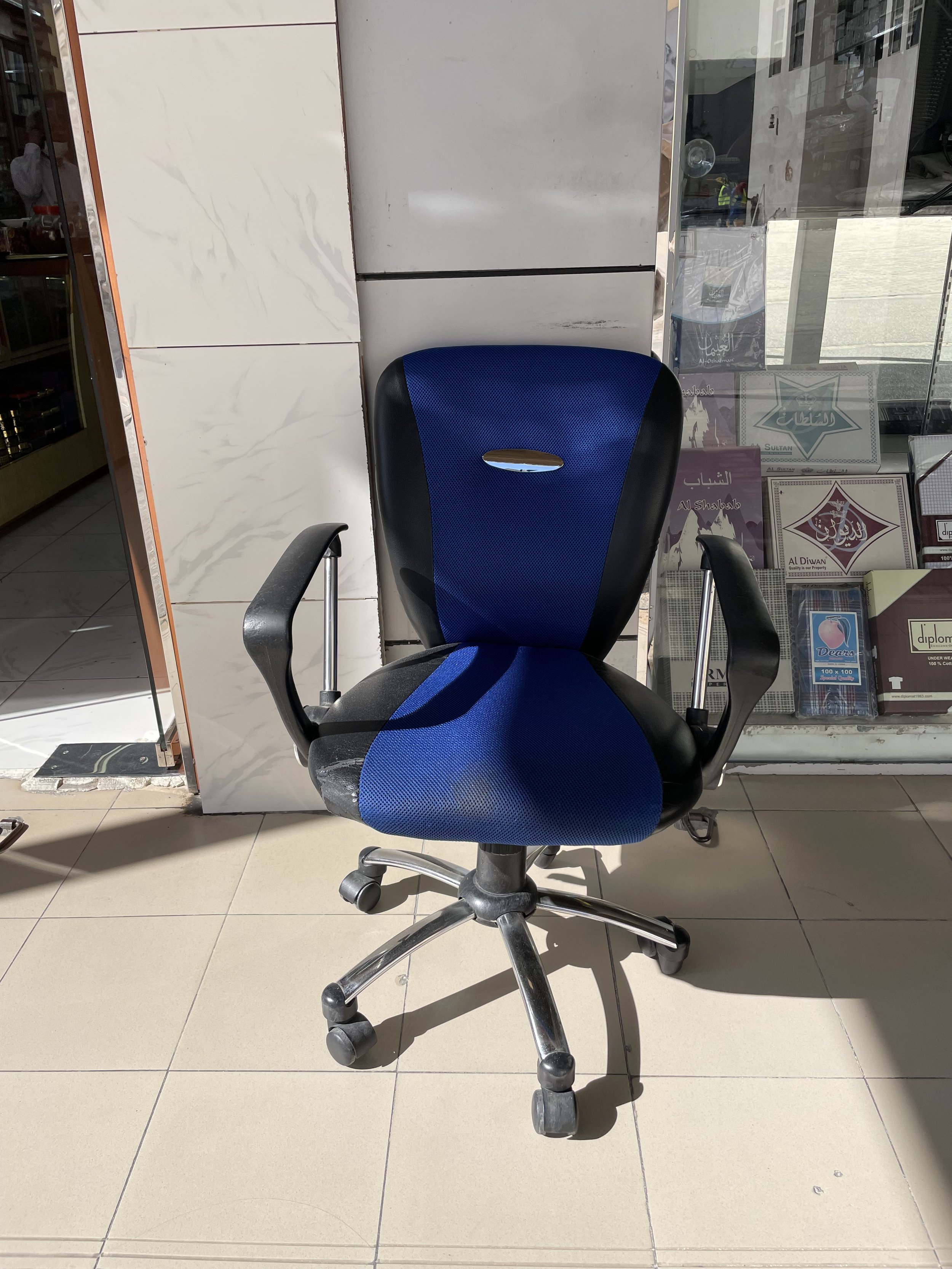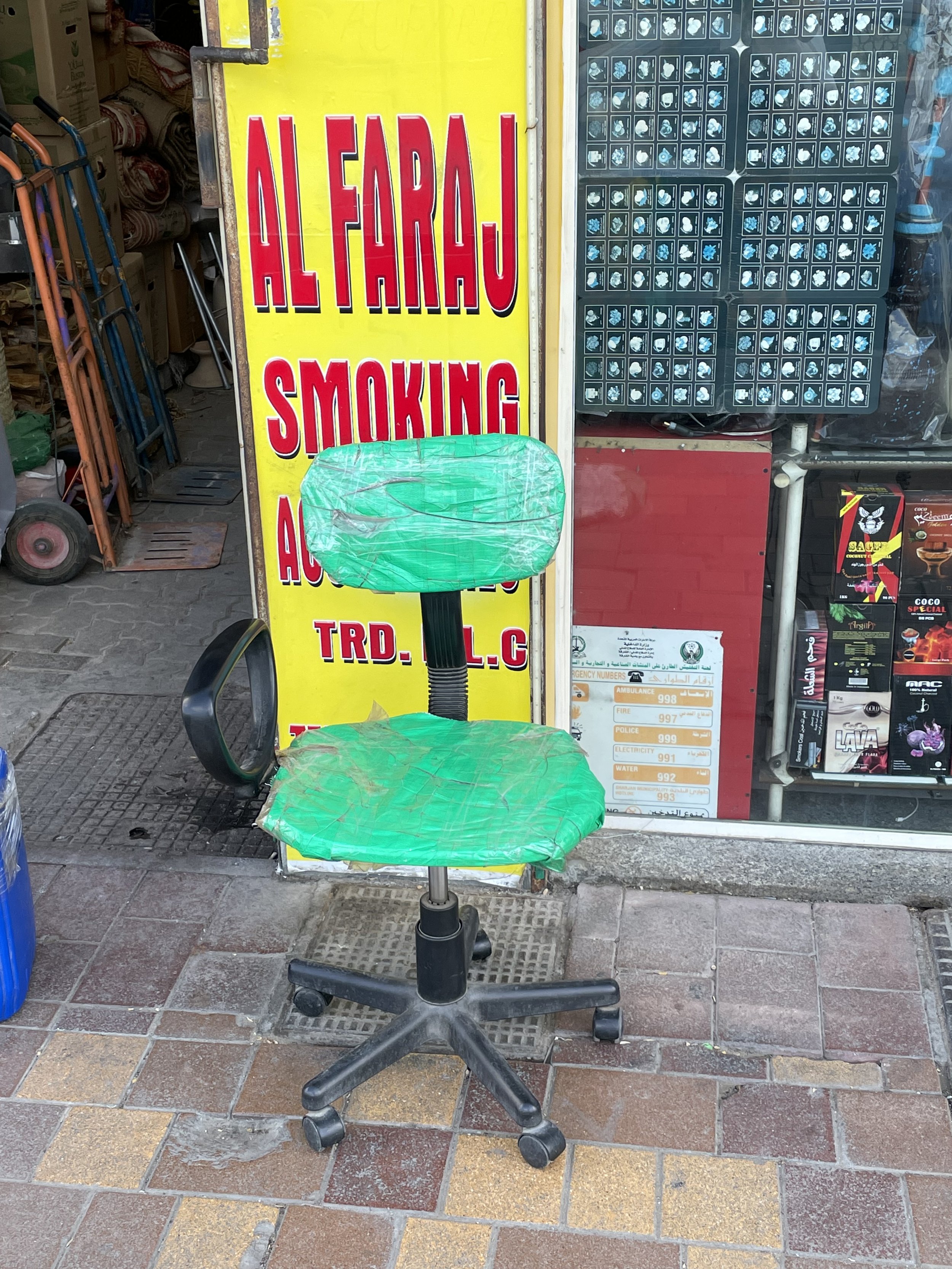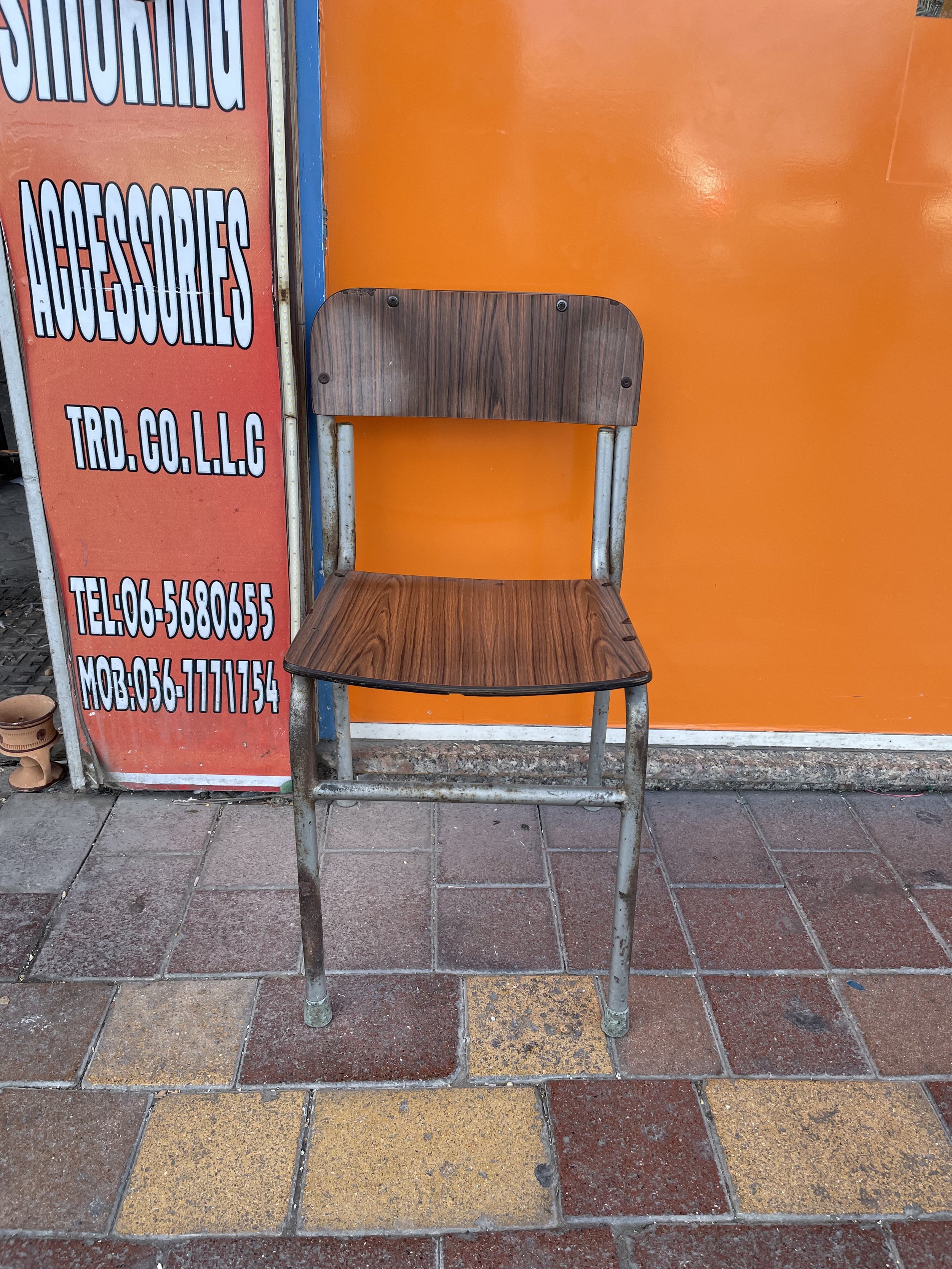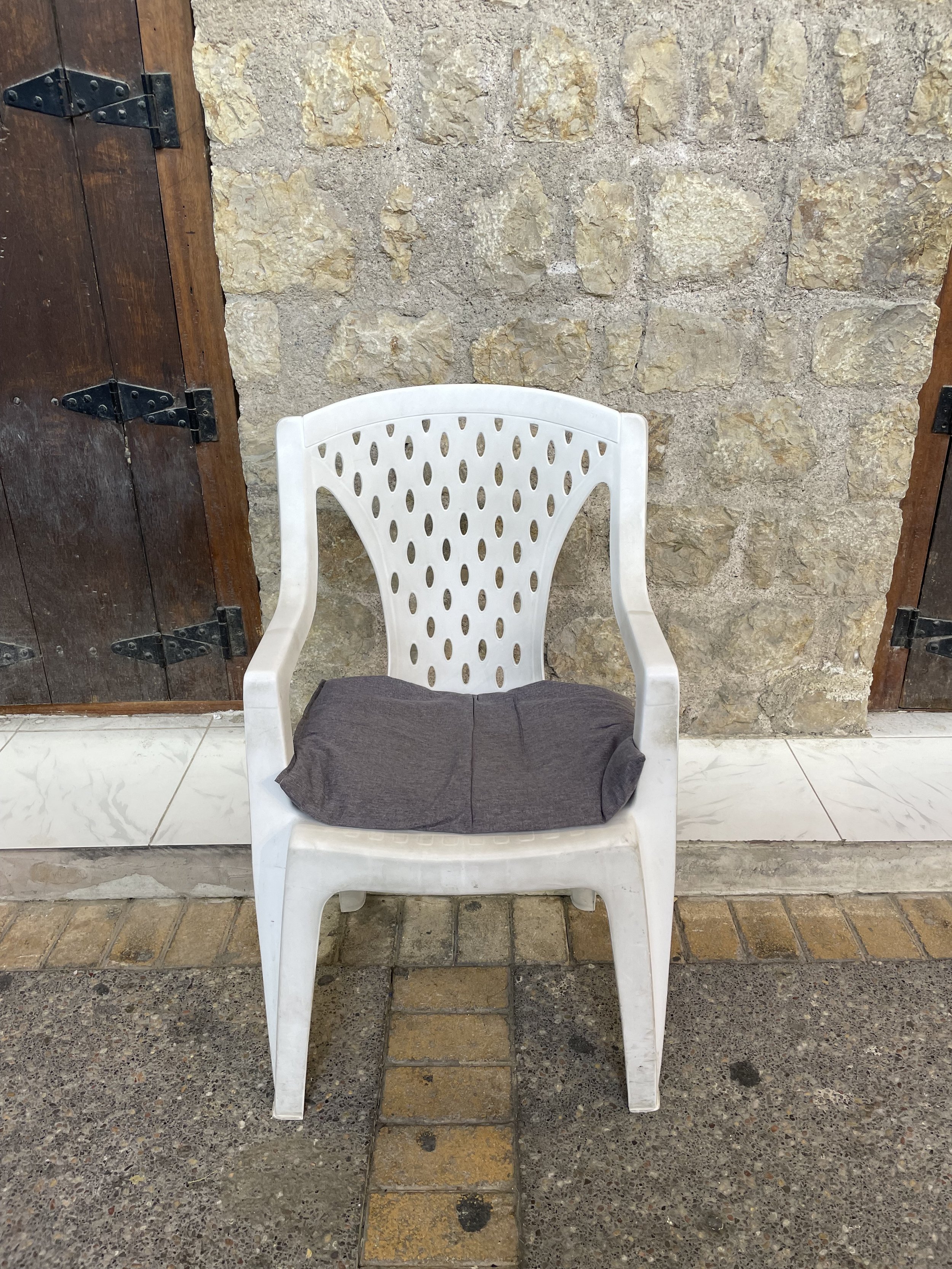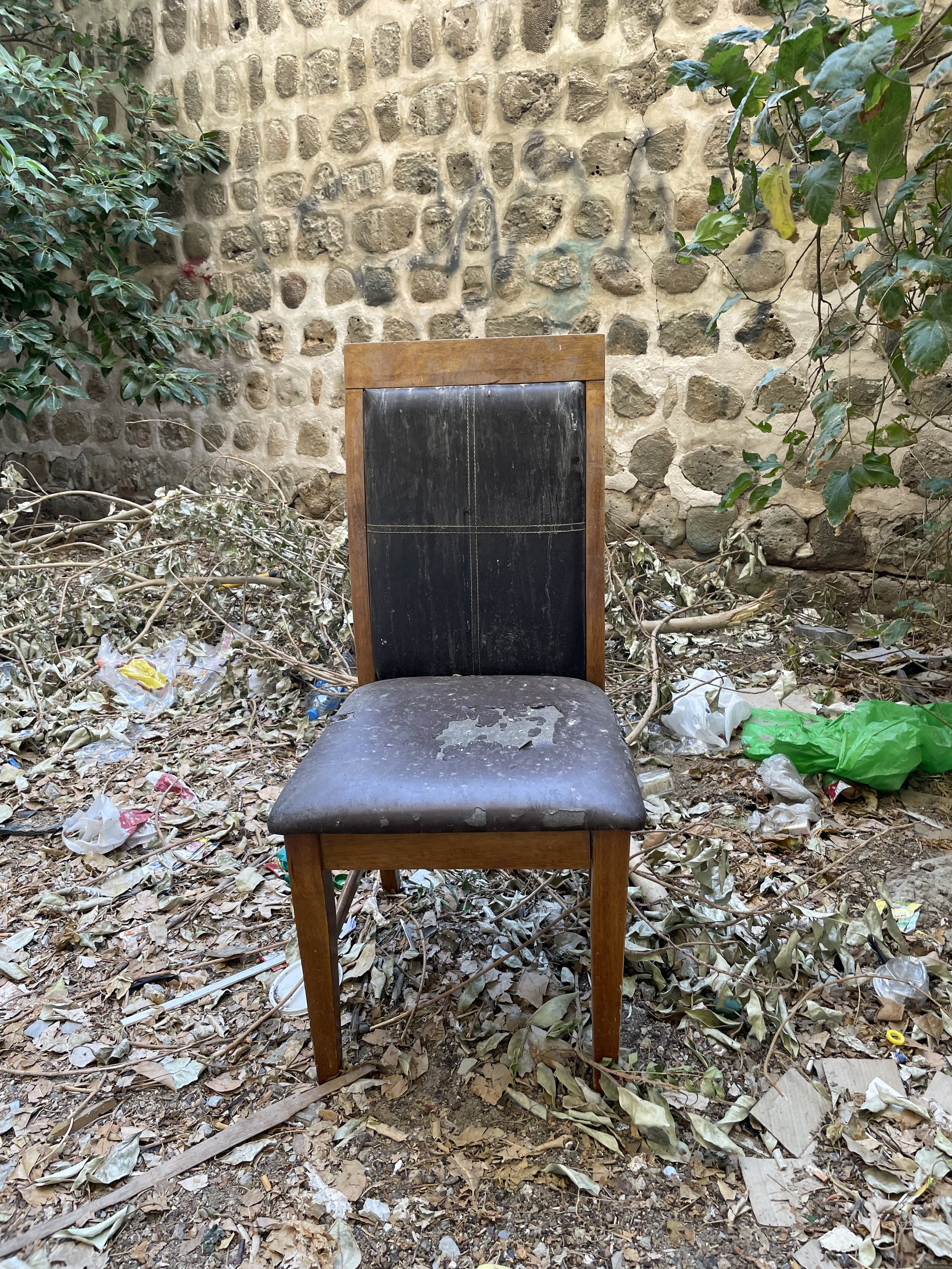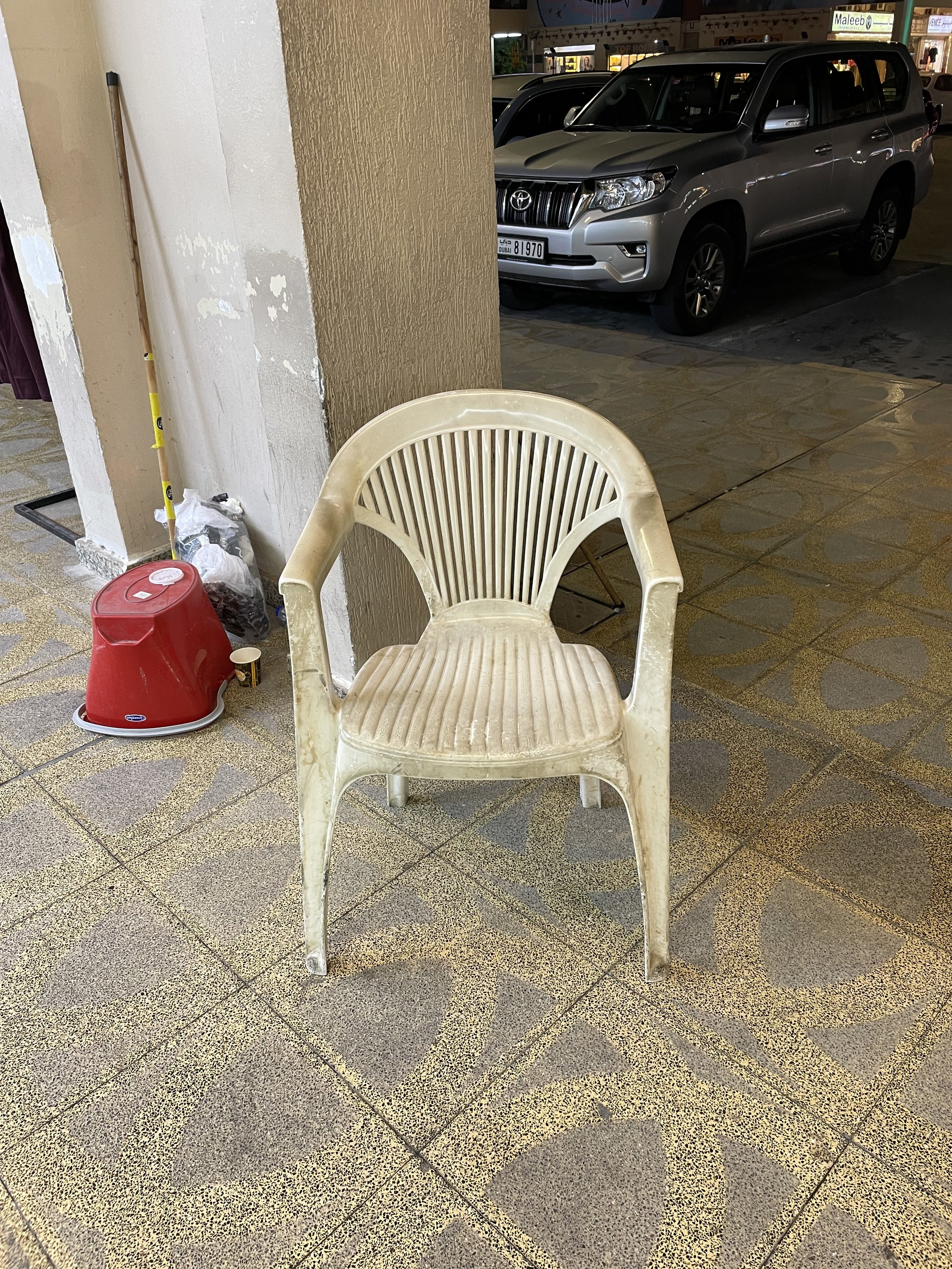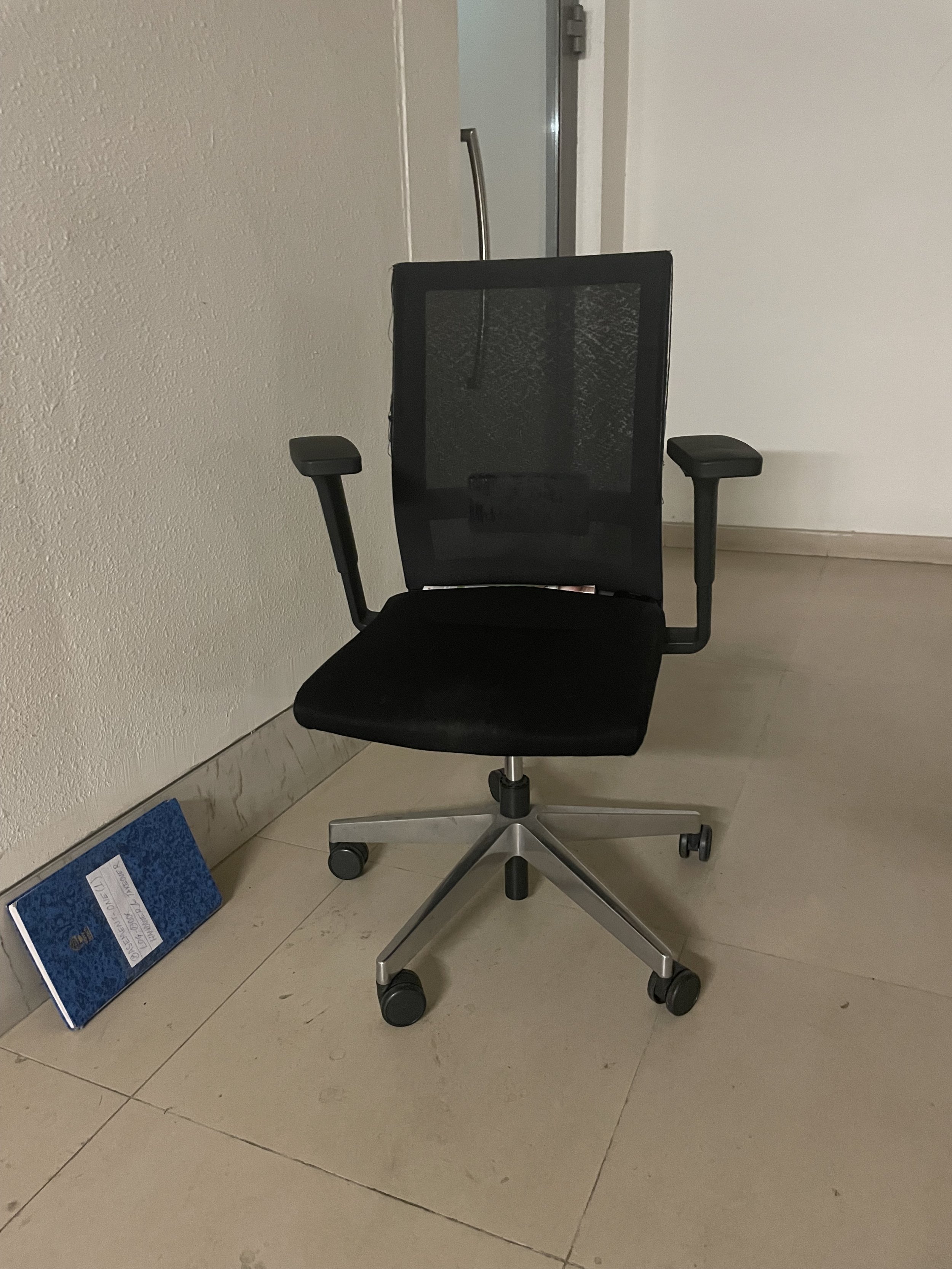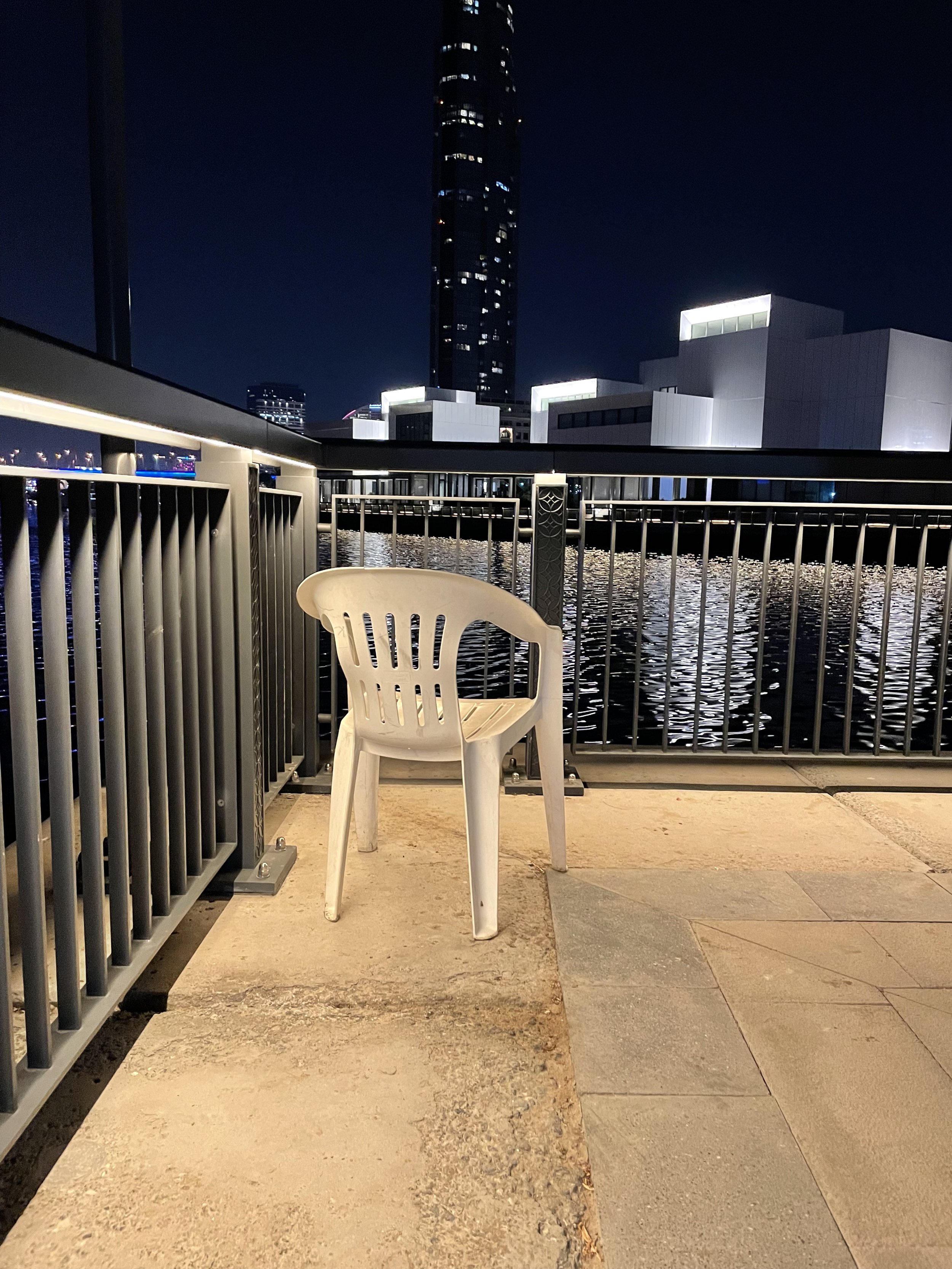Chairs, 2022, digital prints, variable dimensions
At 2am I stared at the MALM furniture set and it stared back at me. Everything was brand new with a fine layer of dust and a whiff of disinfectant. We were in the wrong place. Sipping some Mirinda orange soda, the reckoning began. I had two years.
I moved to Dubai to teach. After 10 years in the classroom I felt confident but never comfortable. I had learned how to ‘manage behaviour’ and ‘make progress’ and had even been labelled as an advanced skills teacher, rolled out for new recruits and staff development sessions. However I still felt out of place and a little bit fraudulent. Mirroring my own time as a student at school. The staff room always made me feel weird. Arriving for my induction day at my new international role made me feel even weirder- everyone was younger and shinier. The place felt like new Ted Baker suits, tans, veneers and Reiss summer dresses accompanied with the scent of Joop and self-assurance. Eventually I found friends but more of that later.
Walking started as a way to numb the loneliness and boredom. I’d put my airpods in and blast out club tunes (circa 2003) ignoring the apple warning from Sounds and Haptics. Sometimes I’d follow the route with the Pilipino and Keralan maids walking chihuahuas and french bulldogs, along the manicured creek side paths. Other times I would go off-road through the in-between spaces, patches of desert, rare blind spots in the developers gaze.
My local area was, like most of Dubai in the midst of building and self improvement. Glossy speculative real estate developments with ‘Opening Soon’ signs where the aspirational is sold as real, leaving no bandwidth for reality itself. Stock images of friends enjoying a cappuccino at a pavement café stared out from billboards behind static cranes and scaffolding. I’d talk to colleagues about the need for a Starbucks or a Zara on our doorstep, as if this would be the vehicle to self actualisation in our bizarre circumstances.
I began to find comfort in these liminal spaces. It’s cliché and too simple to say that Dubai is a transient place, but it is somewhere that felt firmly in the ‘in-between’. I once read somewhere that Oprah invites people to her house parties with a strict end time to avoid any stragglers. Dubai shares this philosophy to hosting. Most people are guests and compared to my native UK the welcome is warm (as long as you’re prepared to work hard).
On my walks I noticed lone chairs parked at the entrance to apartment buildings, offices, shops or the entrances of lifts. The most common design being a generic white plastic garden chair, the type with a clam style back, stackable and retailing at around £10 in the UK. Occasionally you could find a pleather black office chair pertaining to ‘executive realness’ in a former life, now worn down and repaired with silver duct tape. Other lone chairs included shiny imitation Victorians made from wood or plastic and improvised seats made from old paint cans. I think these belonged to security guards, watchmen or the owners of the business they sat outside of.
On each chair you could find clues. A notebook, a water bottle, a flask of chai or a Bluetooth speaker.
These chairs sat in public space, intruders in a master urban plan. They held a trace of human behaviour that then reshaped the environment, introducing new cultural and social meanings. It felt like a slippage was occurring between public and private. An outbreak of furniture Tourette’s in a squeaky clean press conference on Dubai’s urban plan.
I began to photograph the chairs on my walks. It felt like they were participating in the city and attempting to collaborate with it. This was something I identified with. They were defiant in their embodiment of homeliness against the backdrop of a place consumed with it’s own razor sharp image. These chairs transcended, littered and contaminated the line between public and private. I admired the physical embodiment of dwelling and rootedness to place, something I longed for.
I enjoyed the way I, the city, these chairs and my immigrant worker community engaged. A negotiation and resolution of an array of complexities. Beginning and ending with a feeling of a dislocated identity in the classroom and how this intersected with the city.
My walks in Dubai and the chairs I met helped me make sense of my own position as an artist and educator. The liminal space I now inhabited created an opportunity for a more phenomenological and honest approach to my practice. I learned that my position, history and the knowledge I held as Mr. Herbert had mostly been a myth. I was actually a plastic imitation marble Louis XIV chair sitting on the edge of Sheikh Zayed Road.
Dubai taught me about my ‘plastic chair-ness’. I no longer believed my own history or sense of place in the world. I was neither outside or inside, home or abroad. In doing this I was able to reconnect with my students and make new friends (some of which were very different types of chairs).



